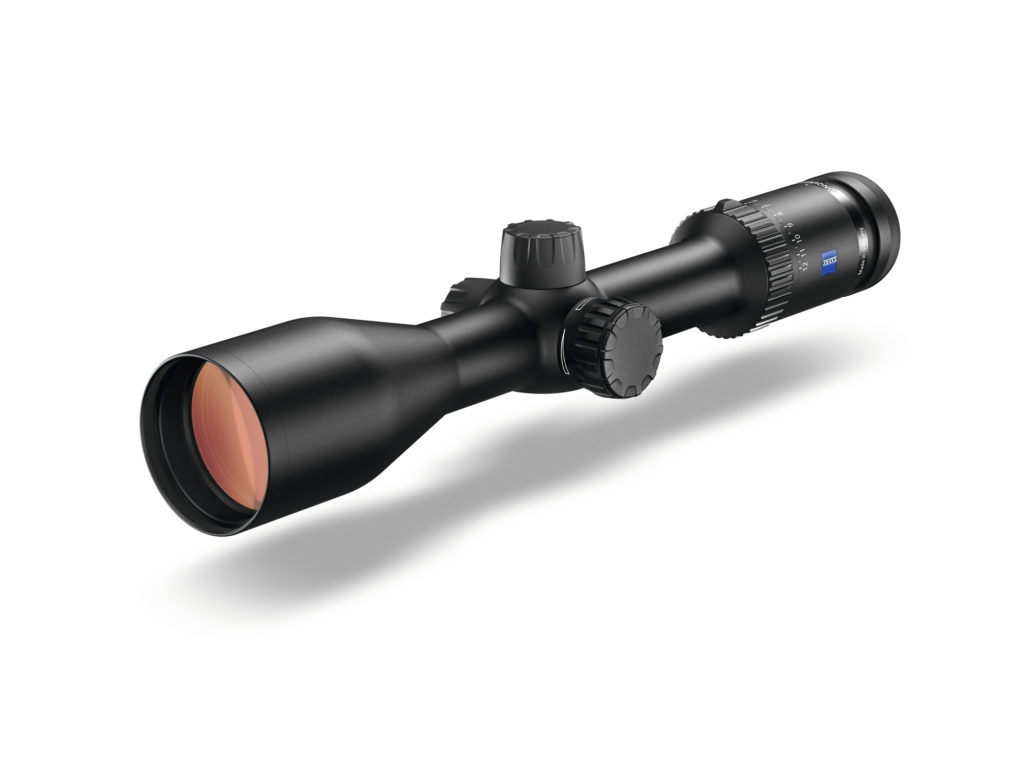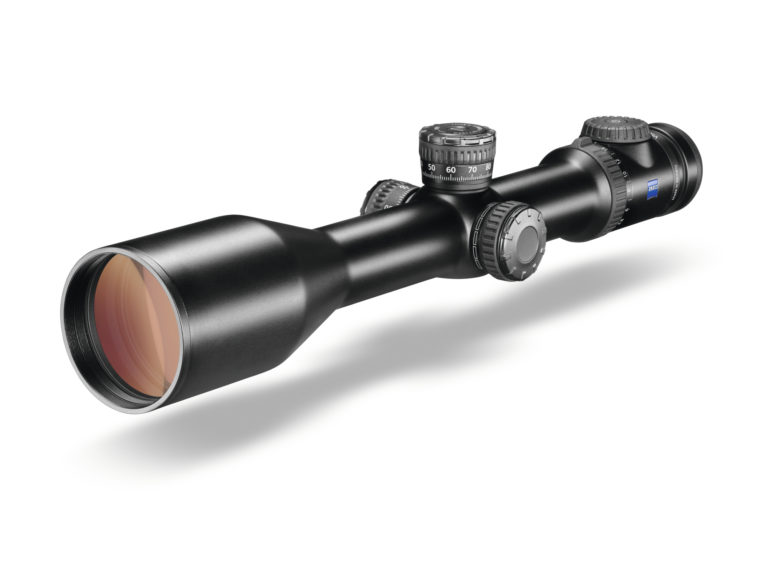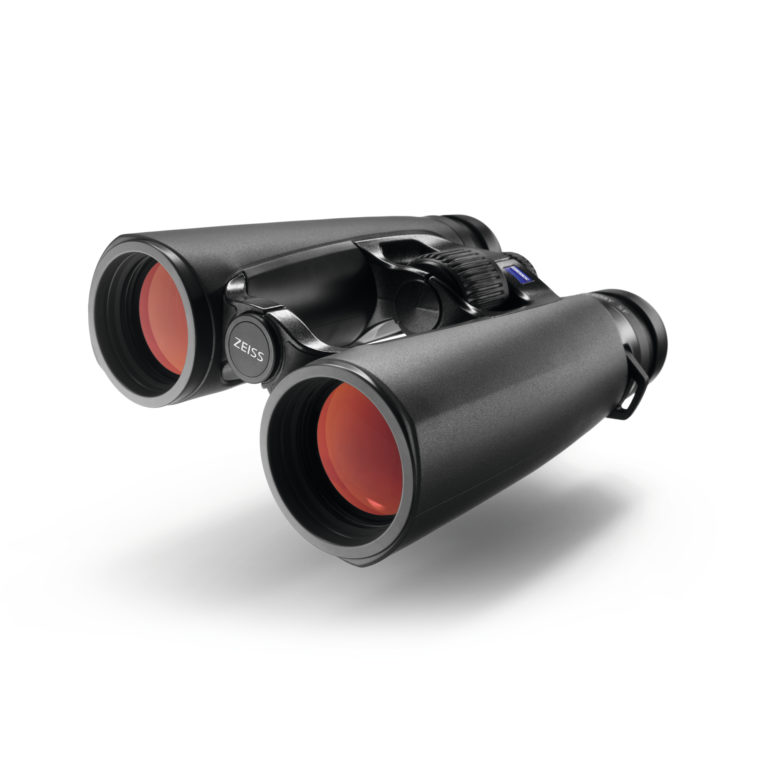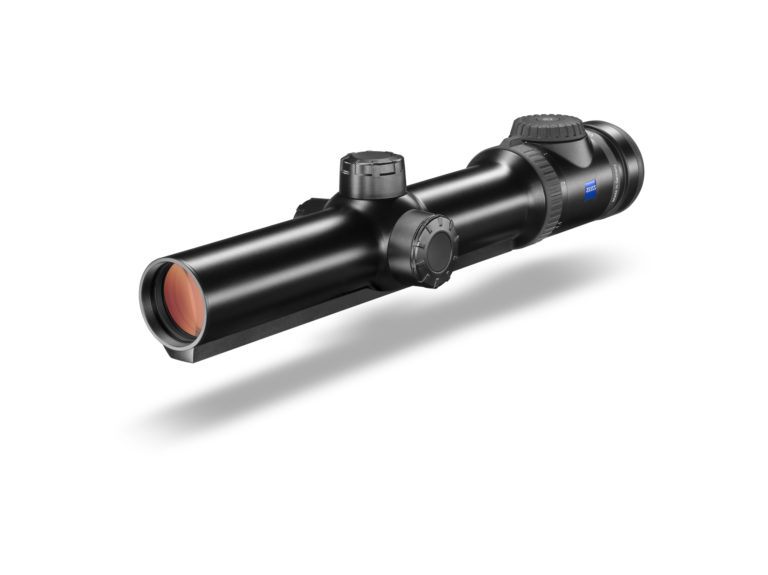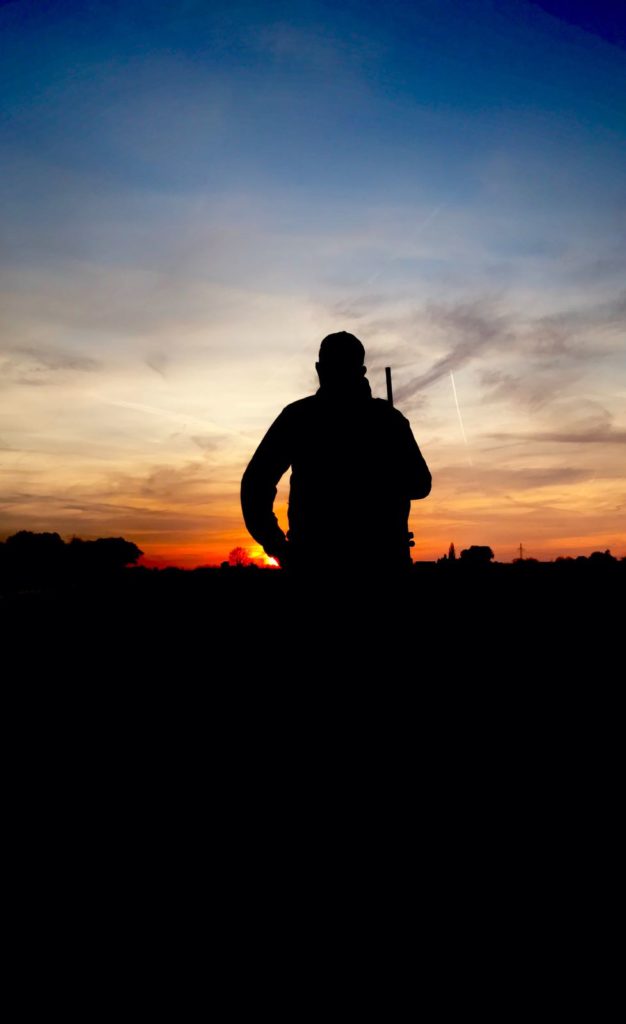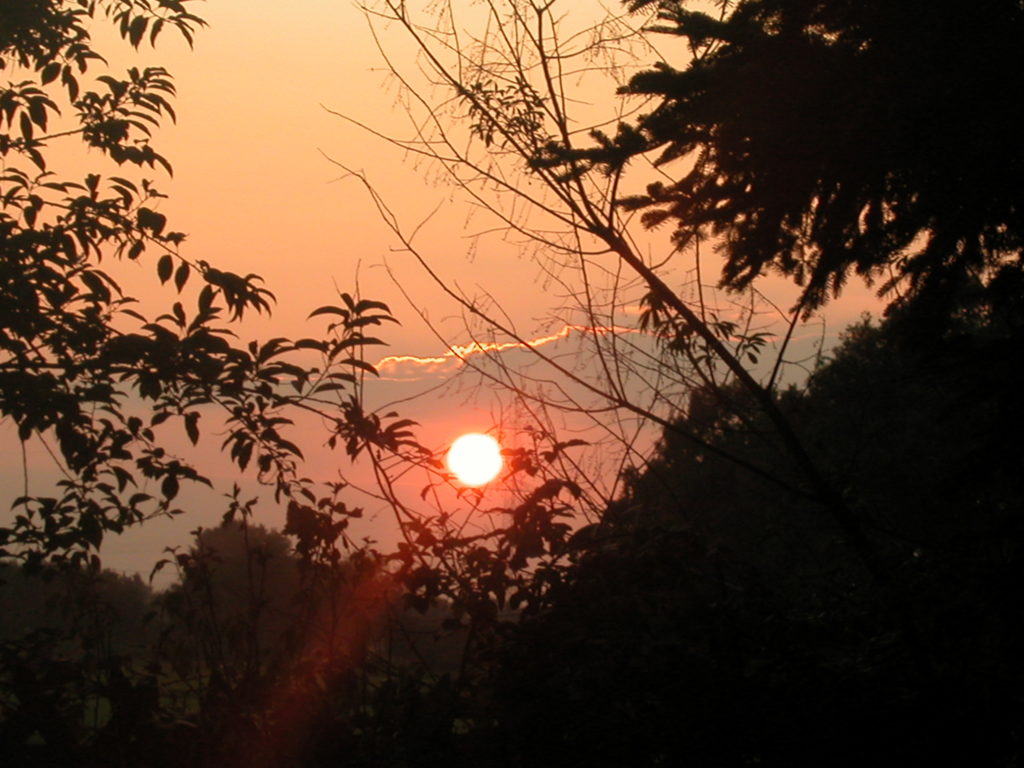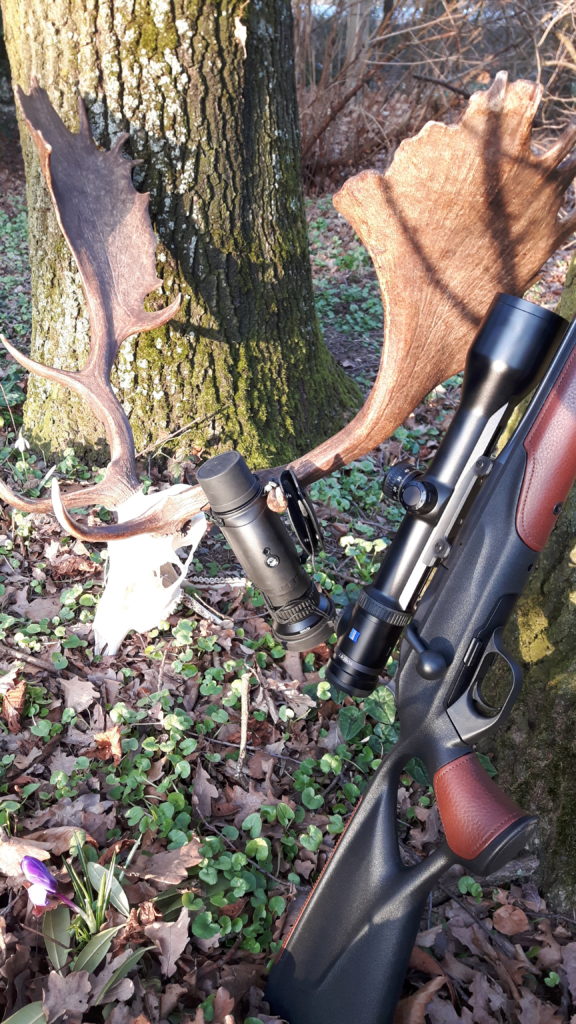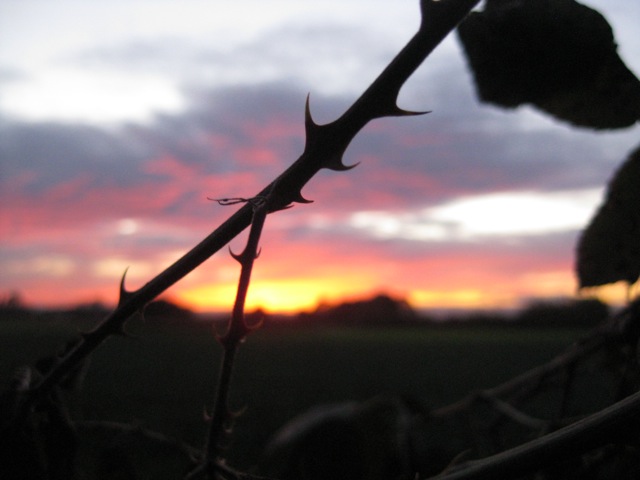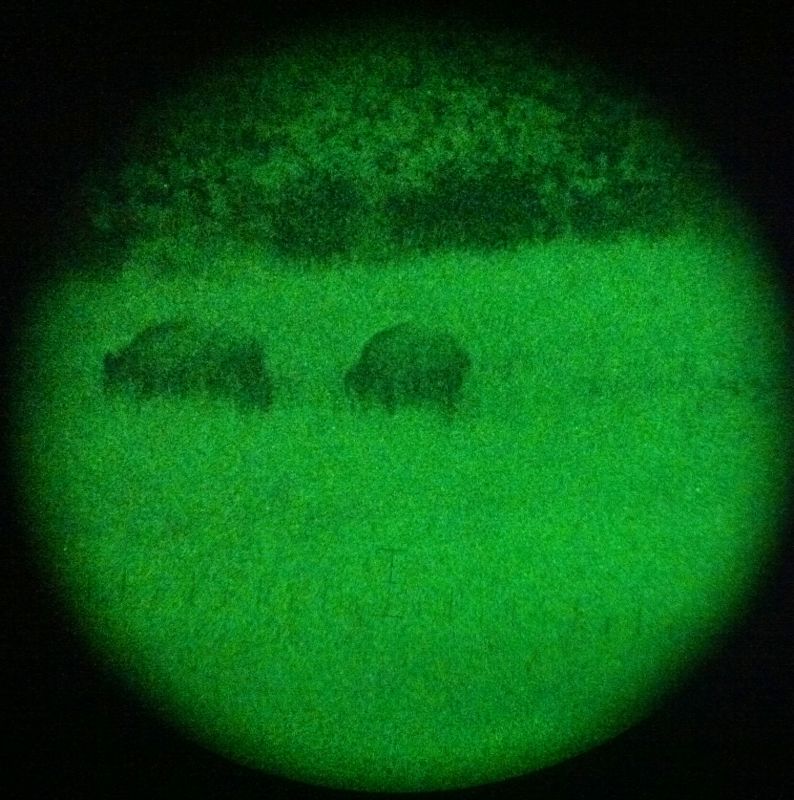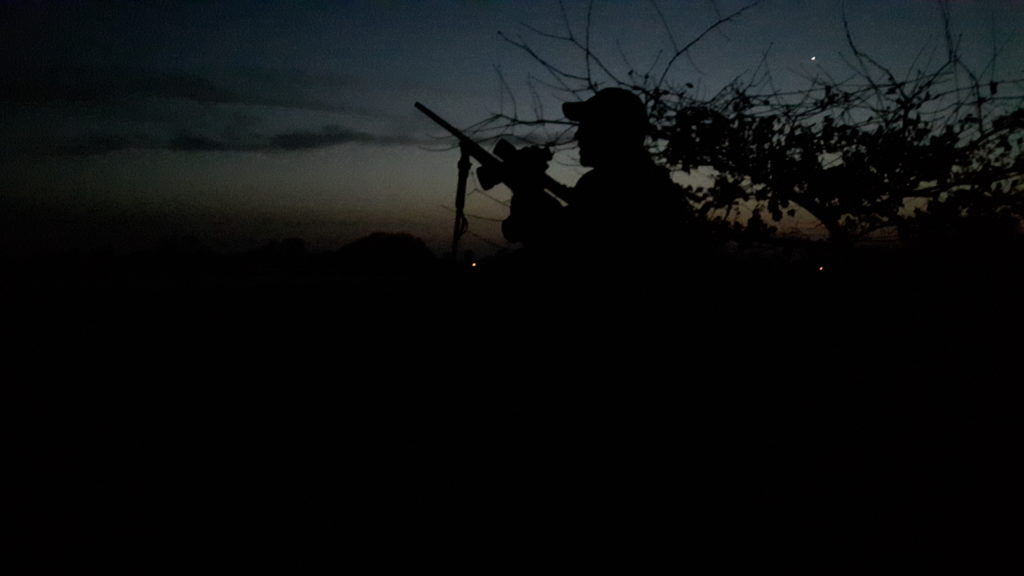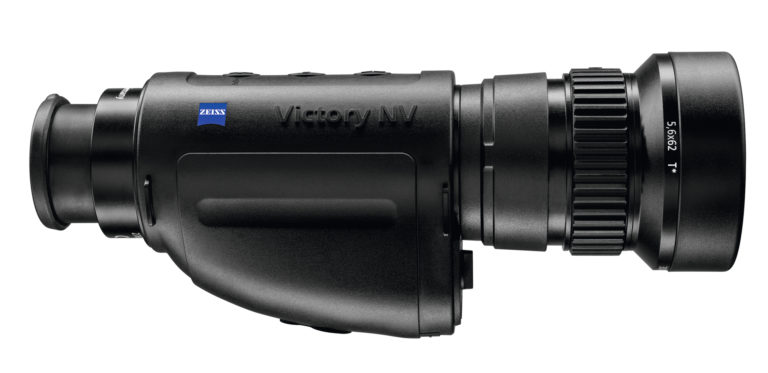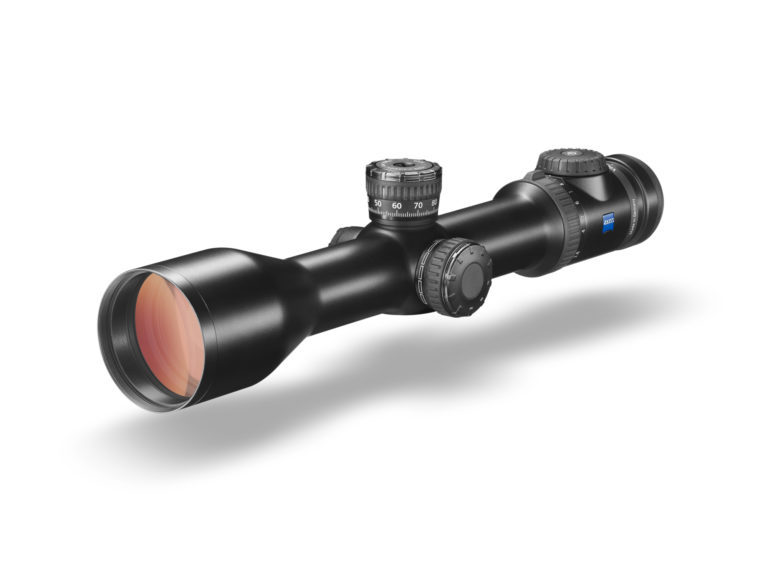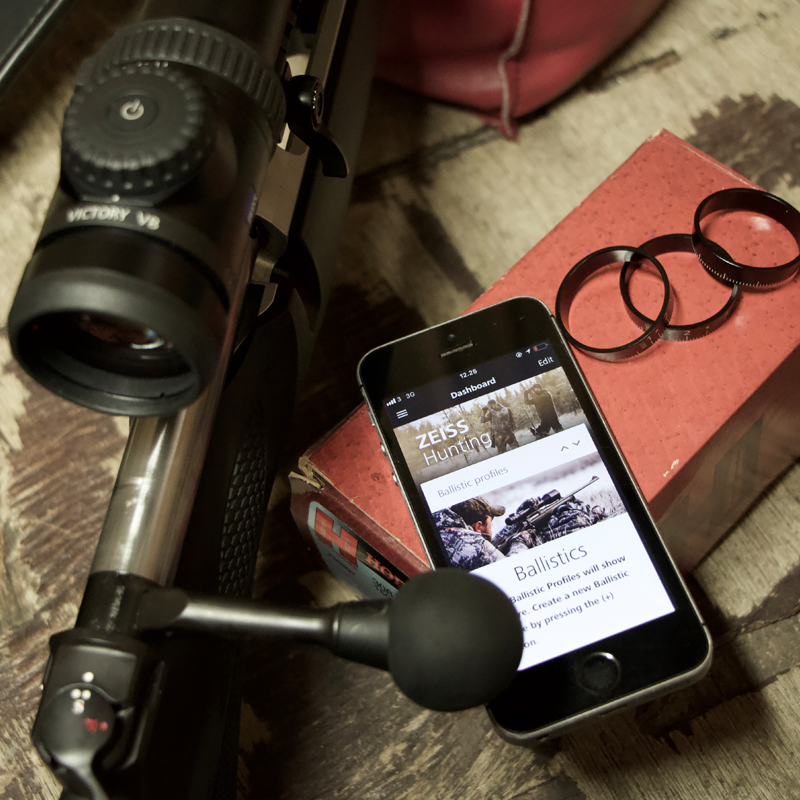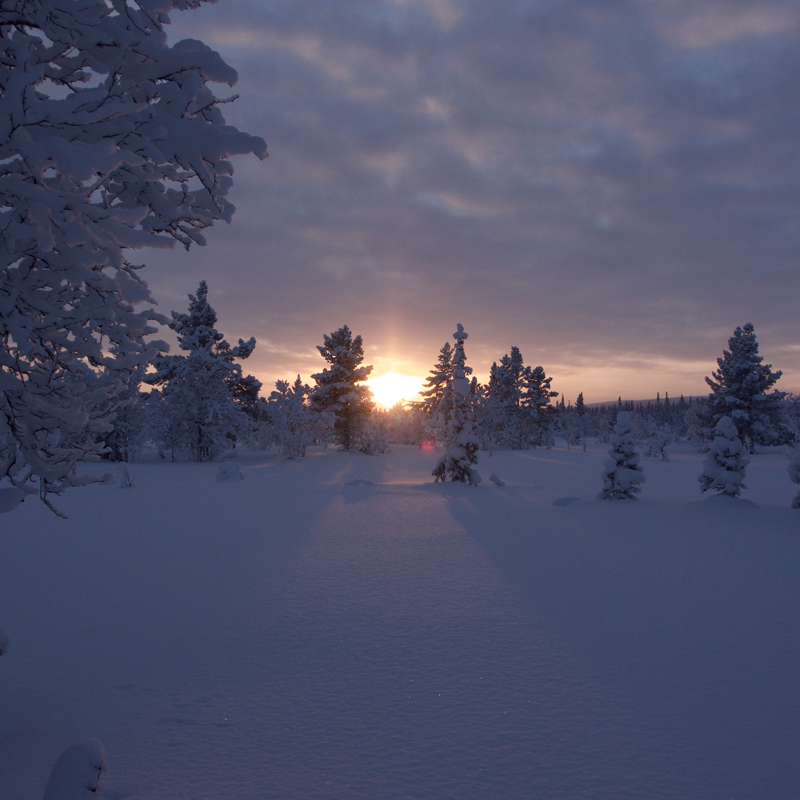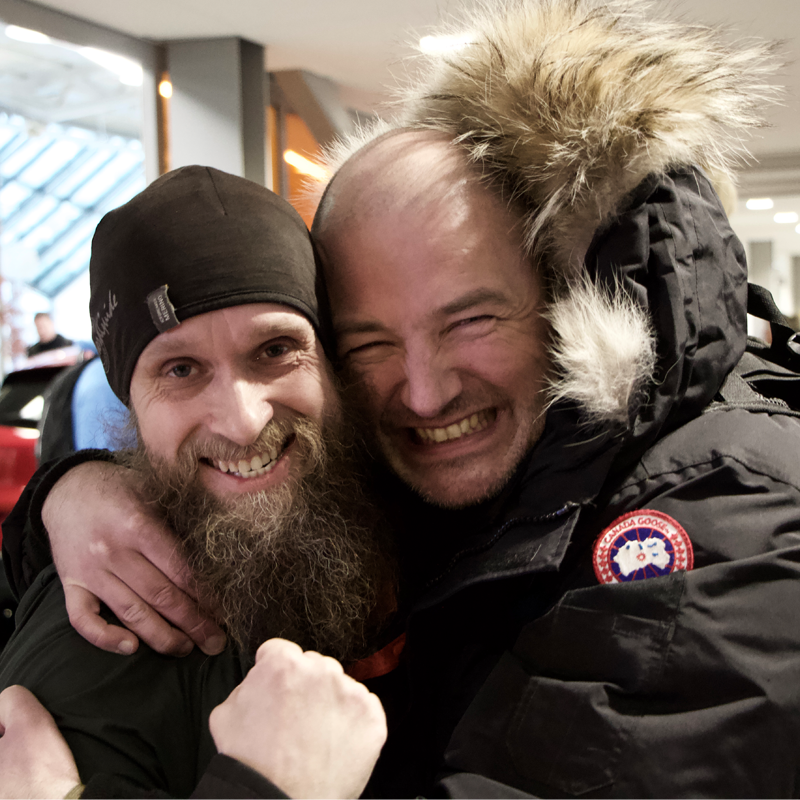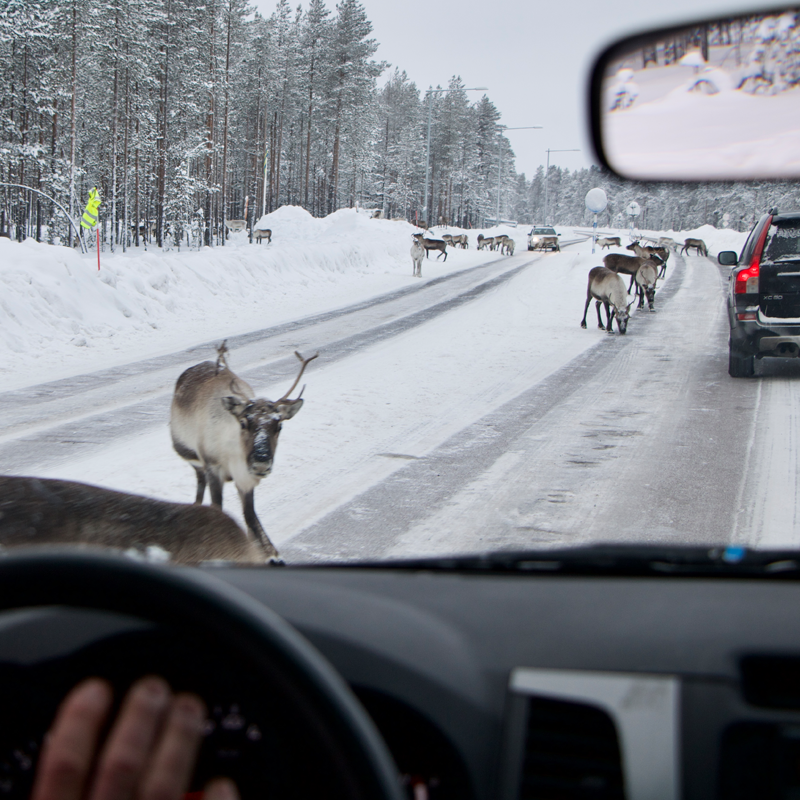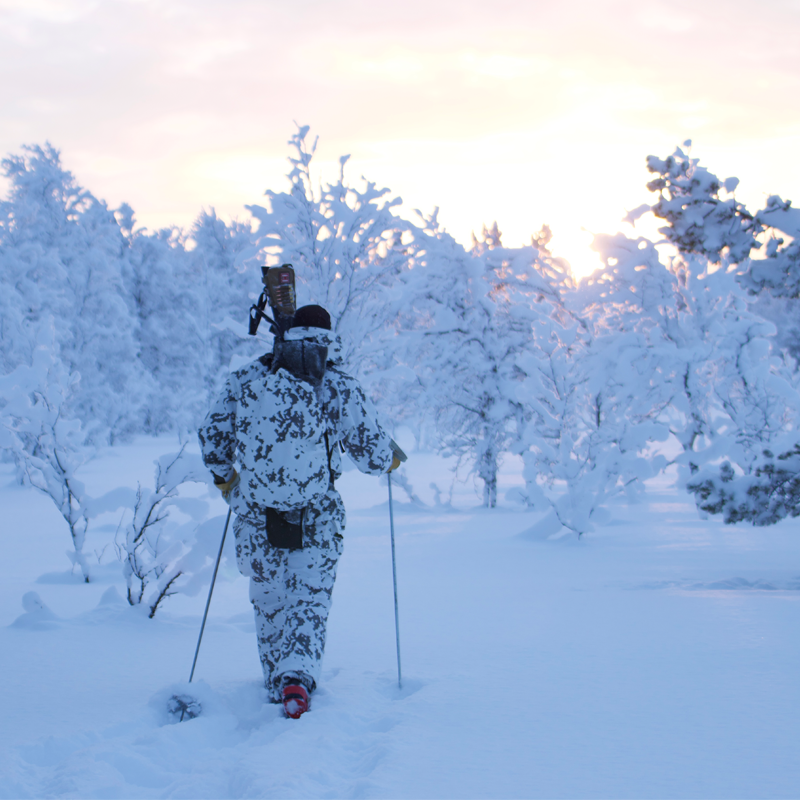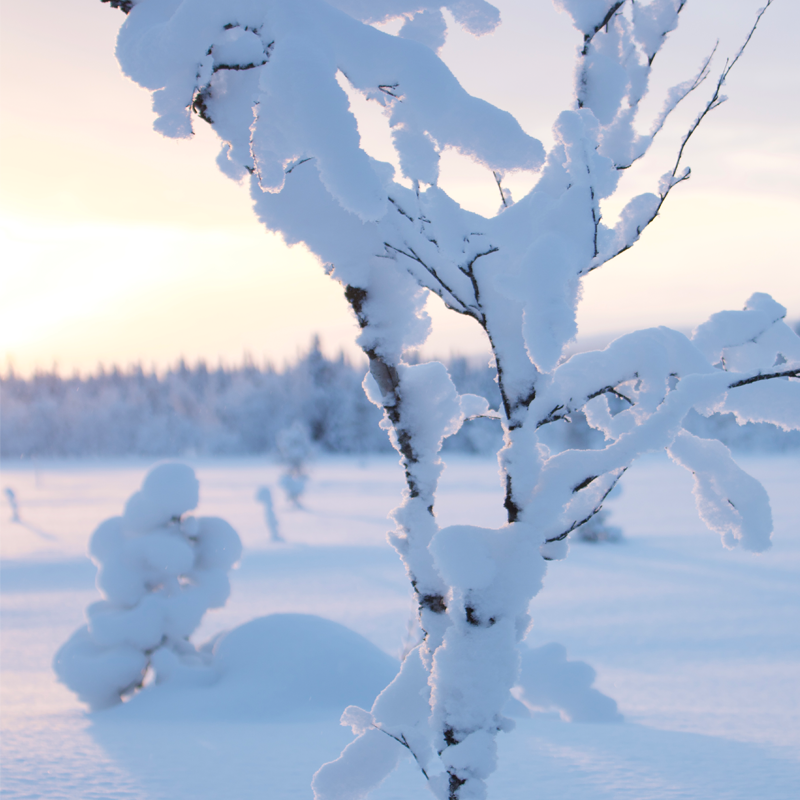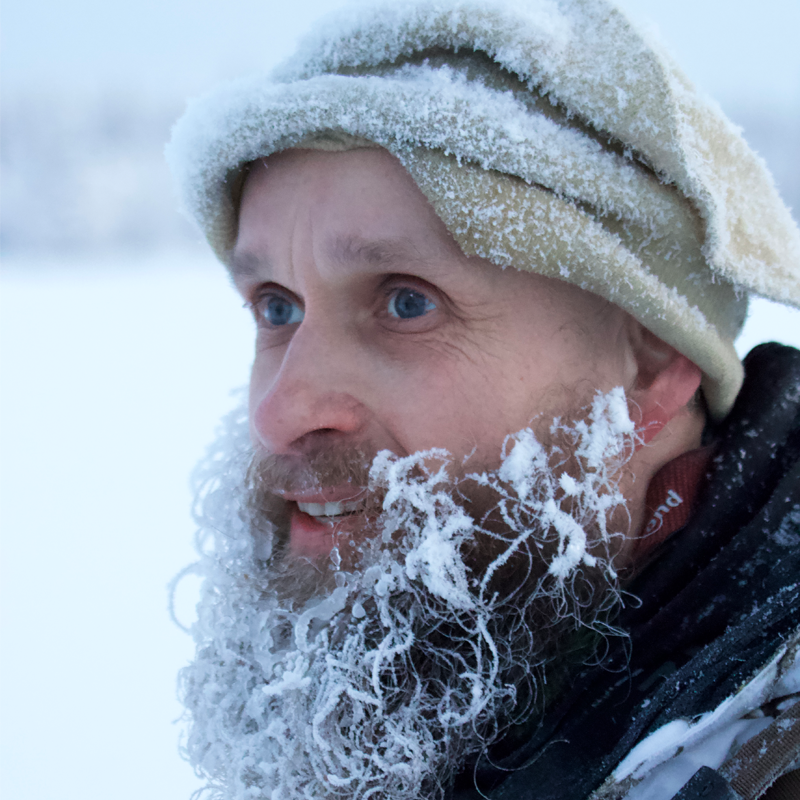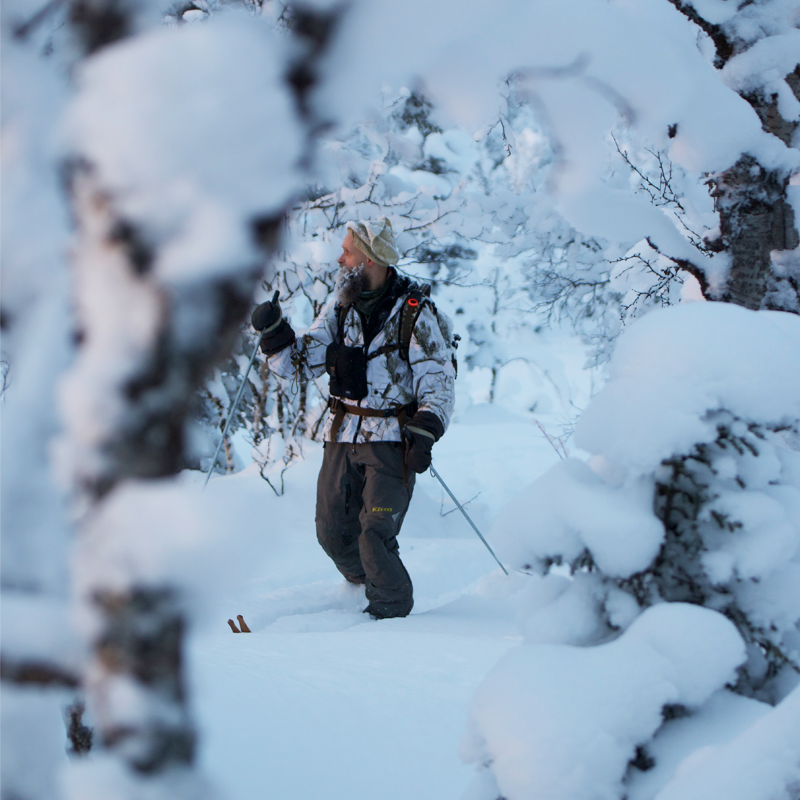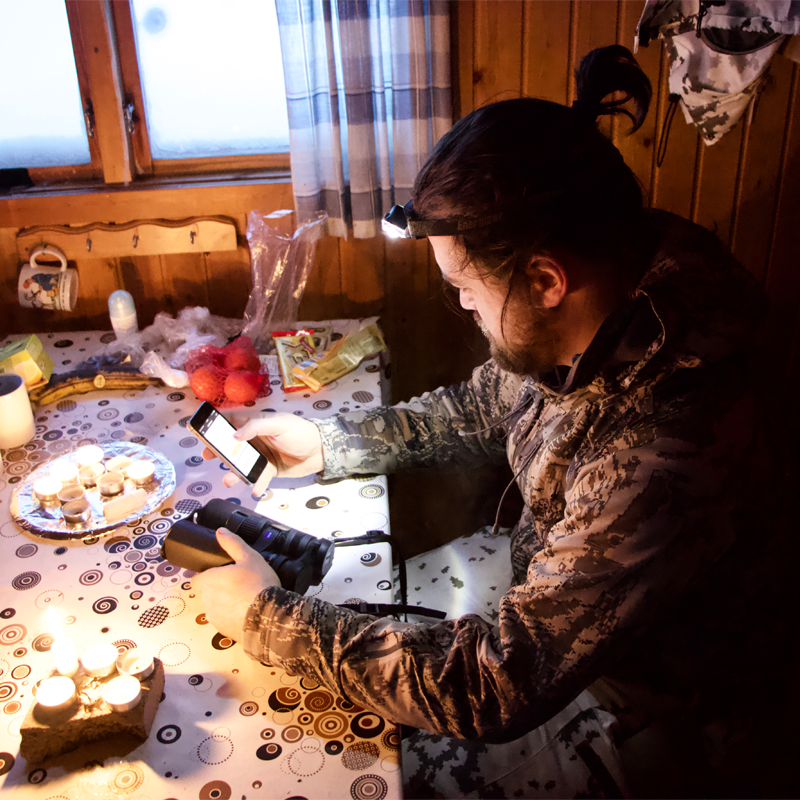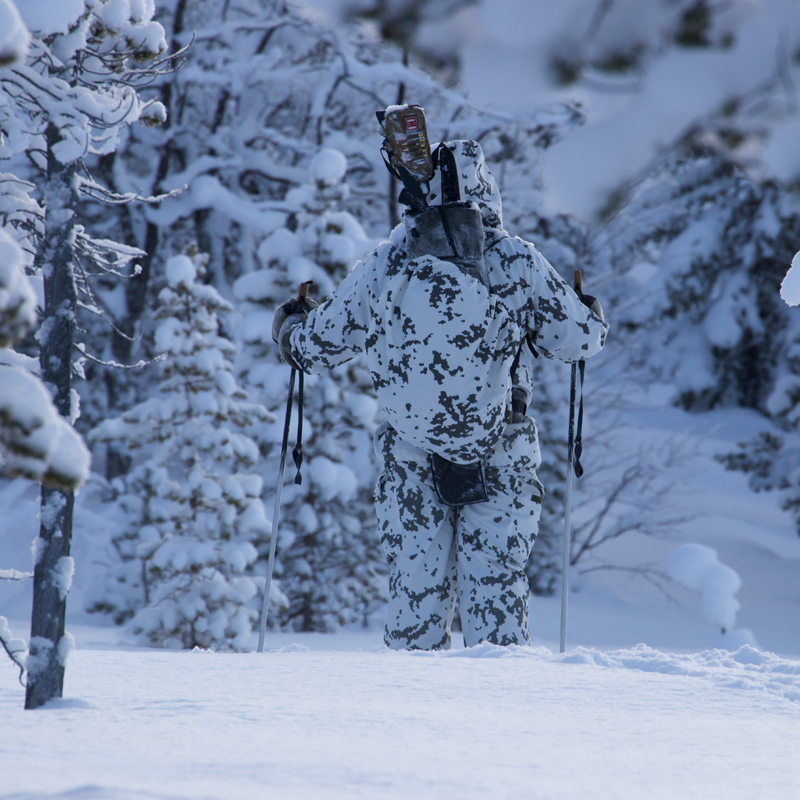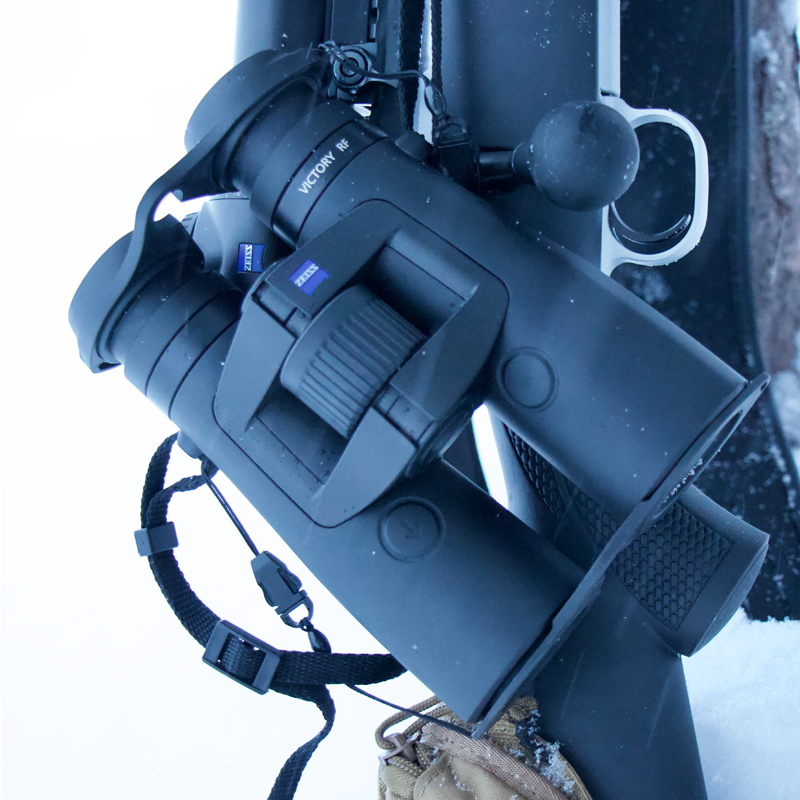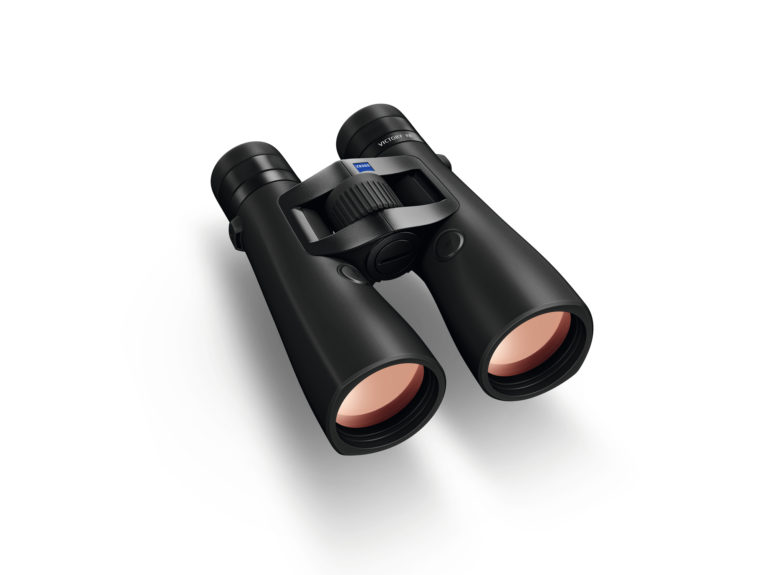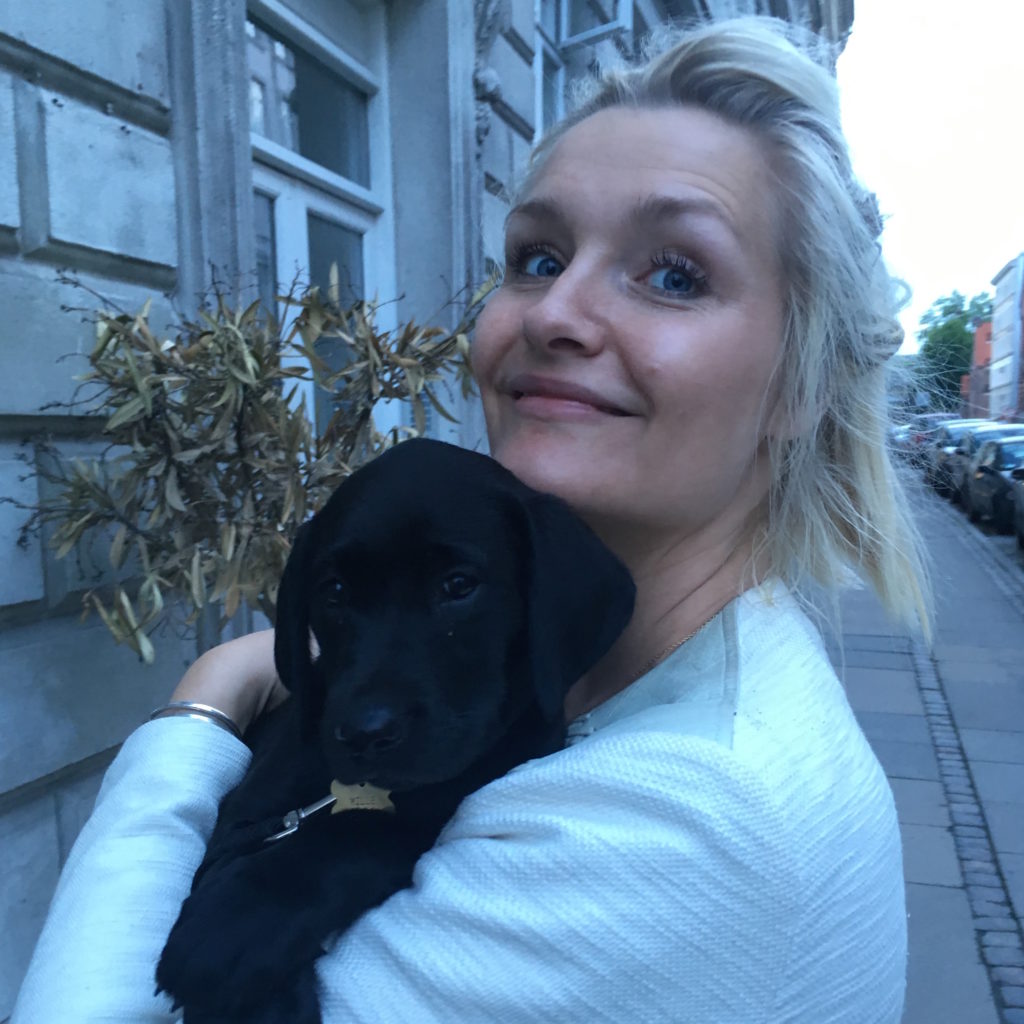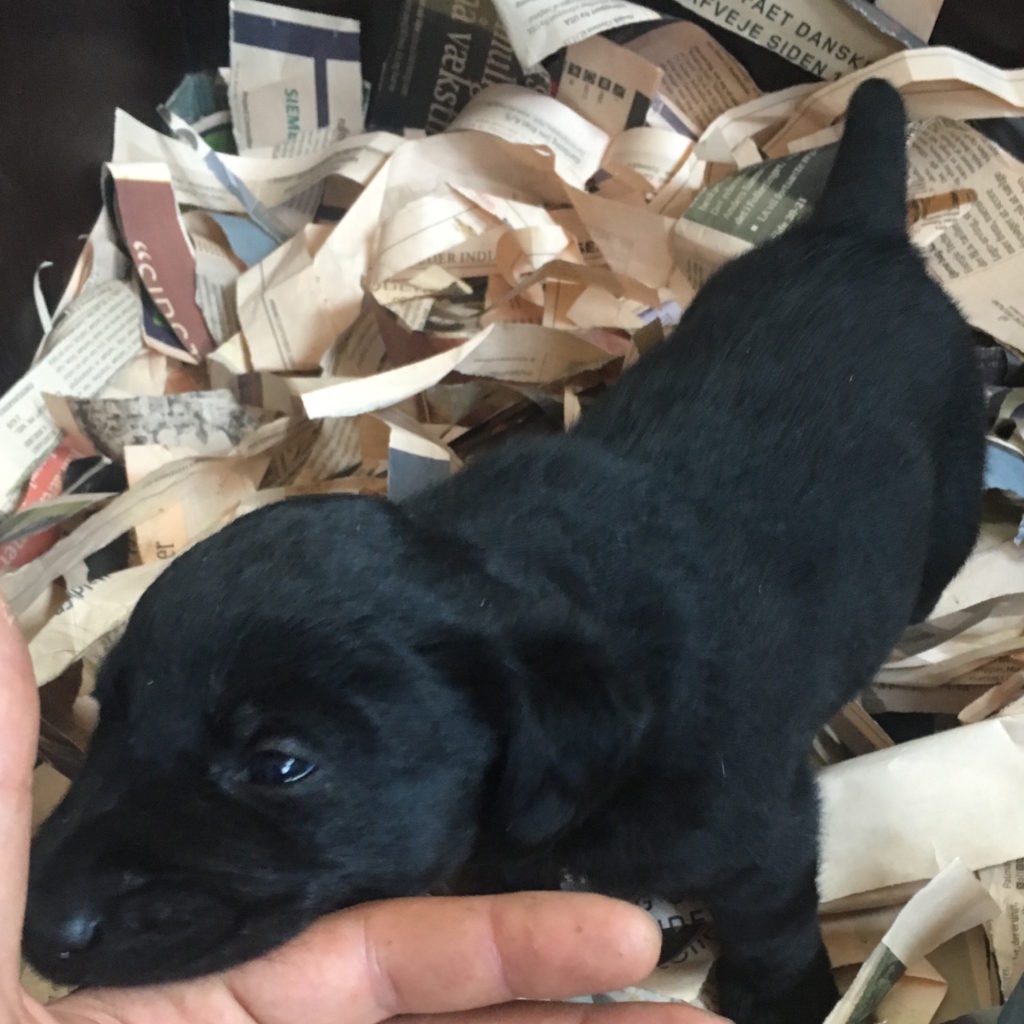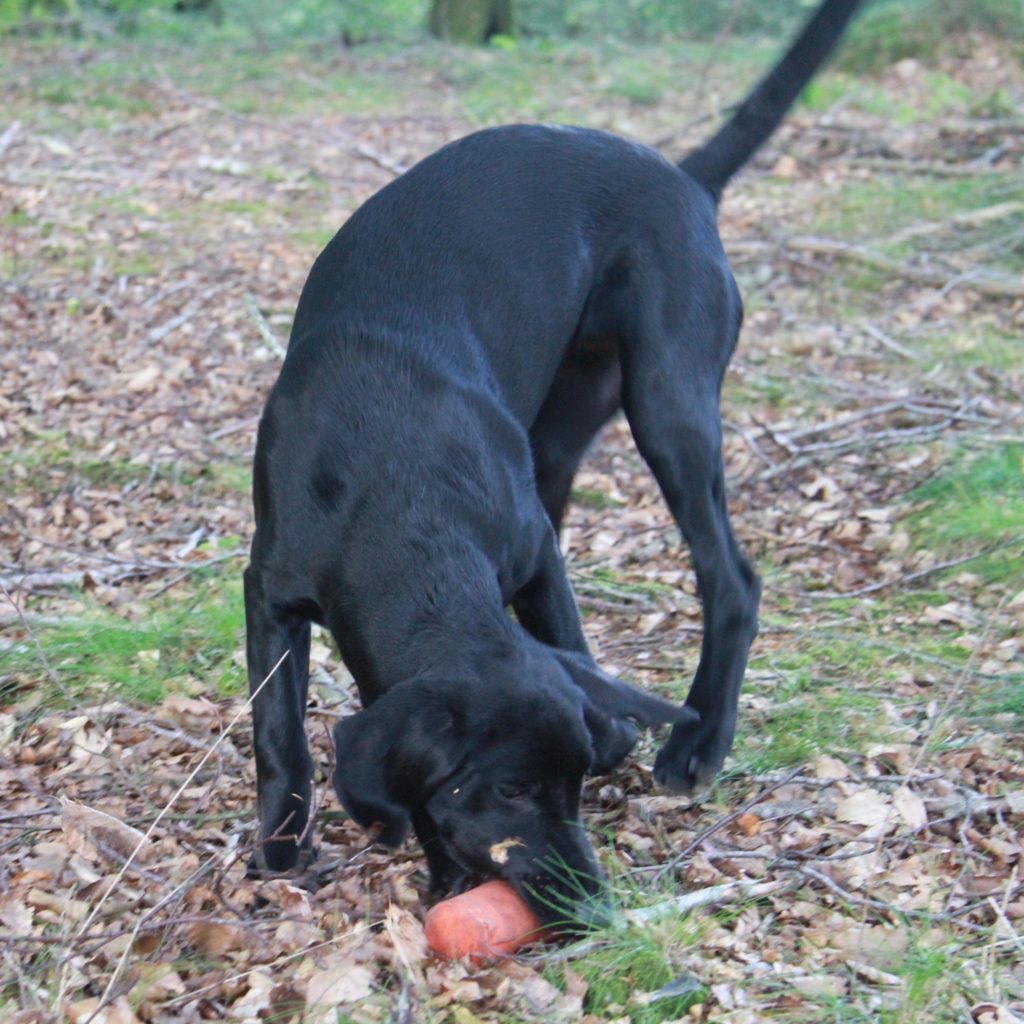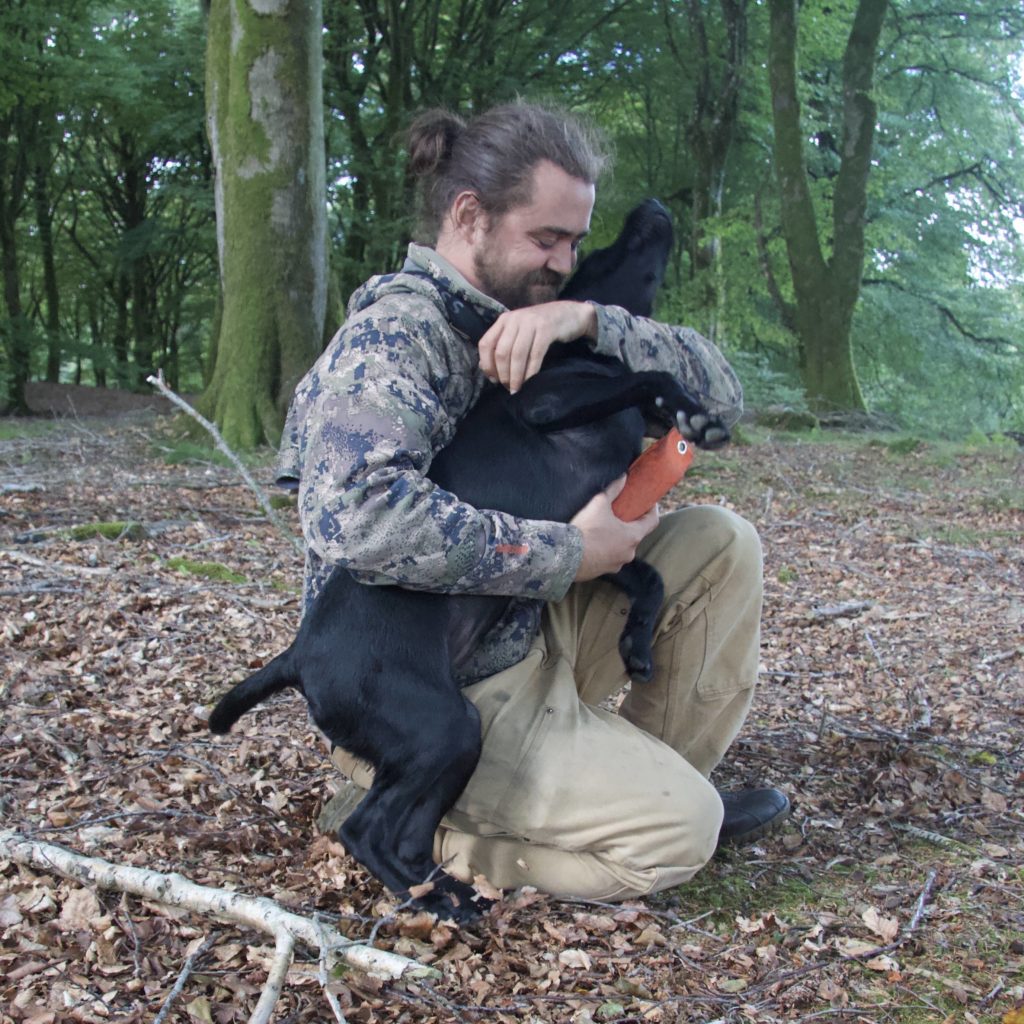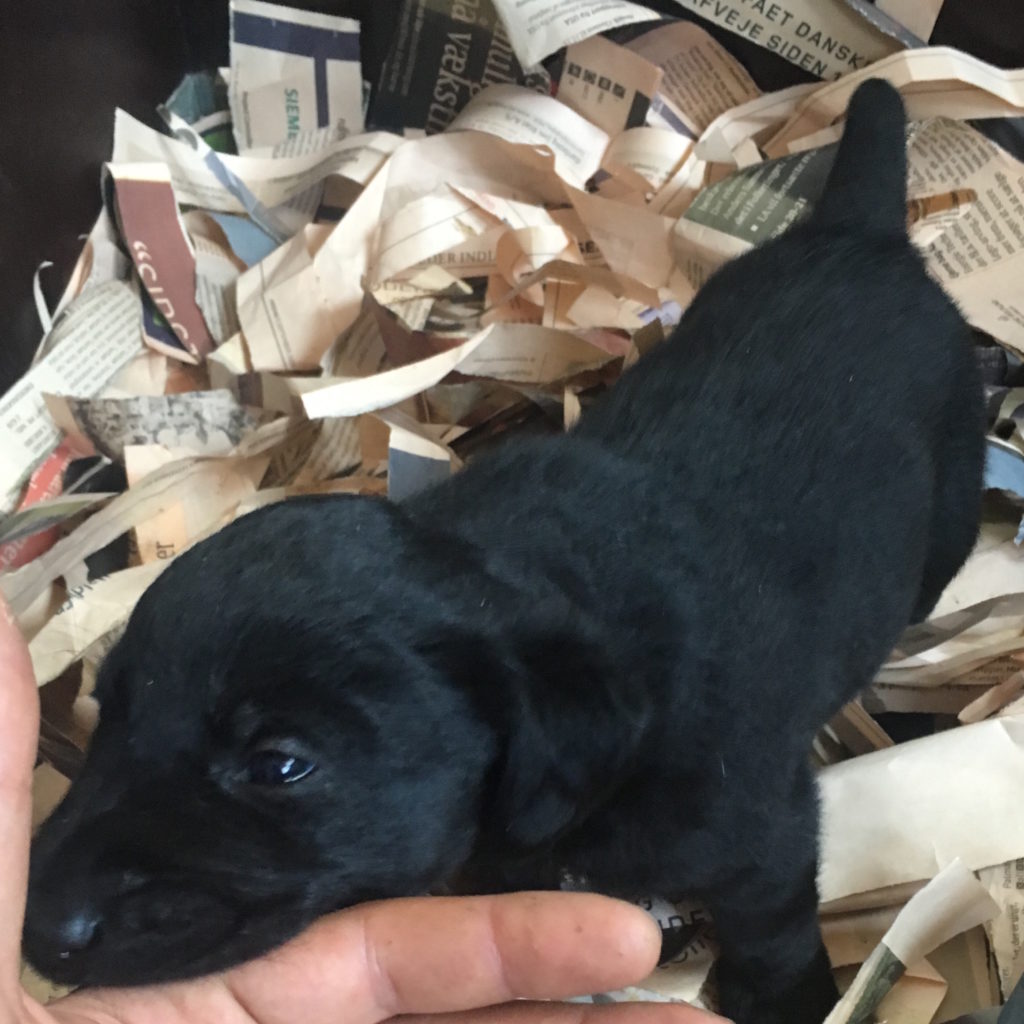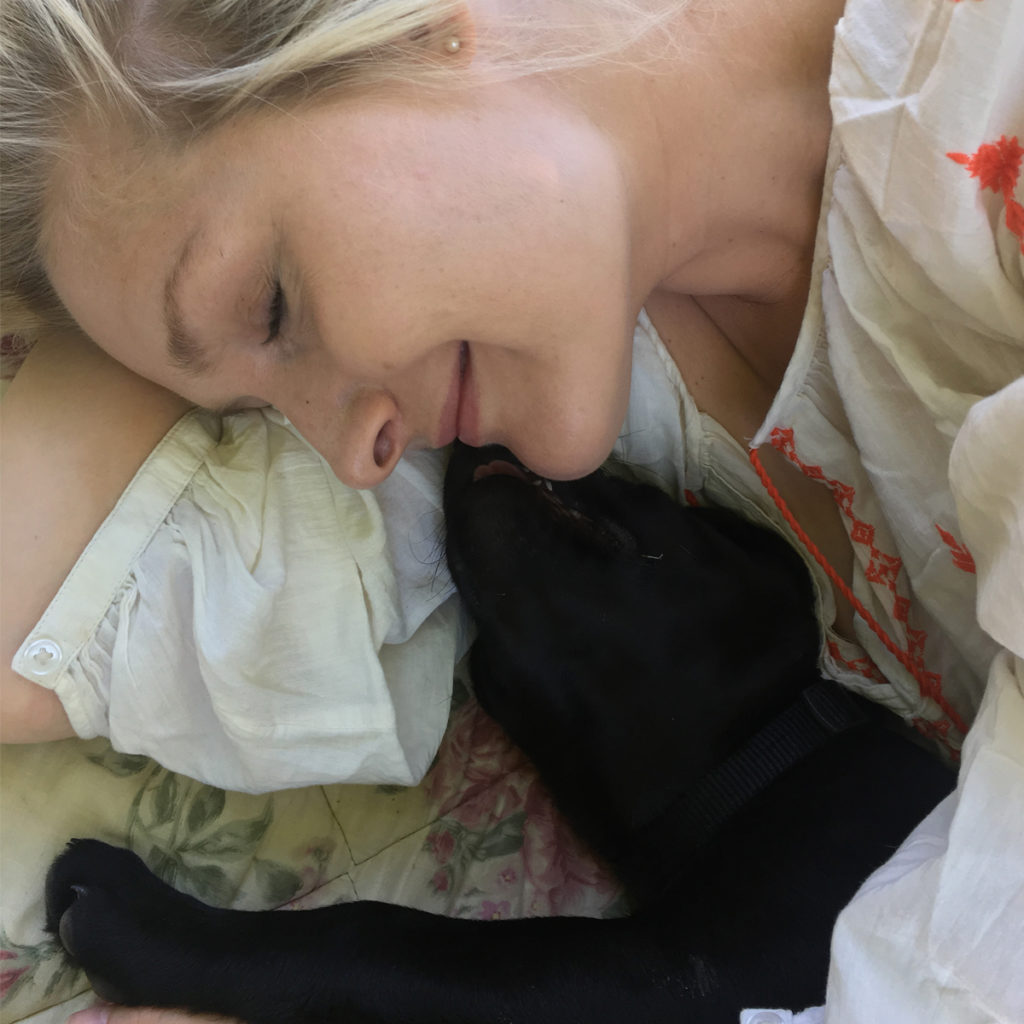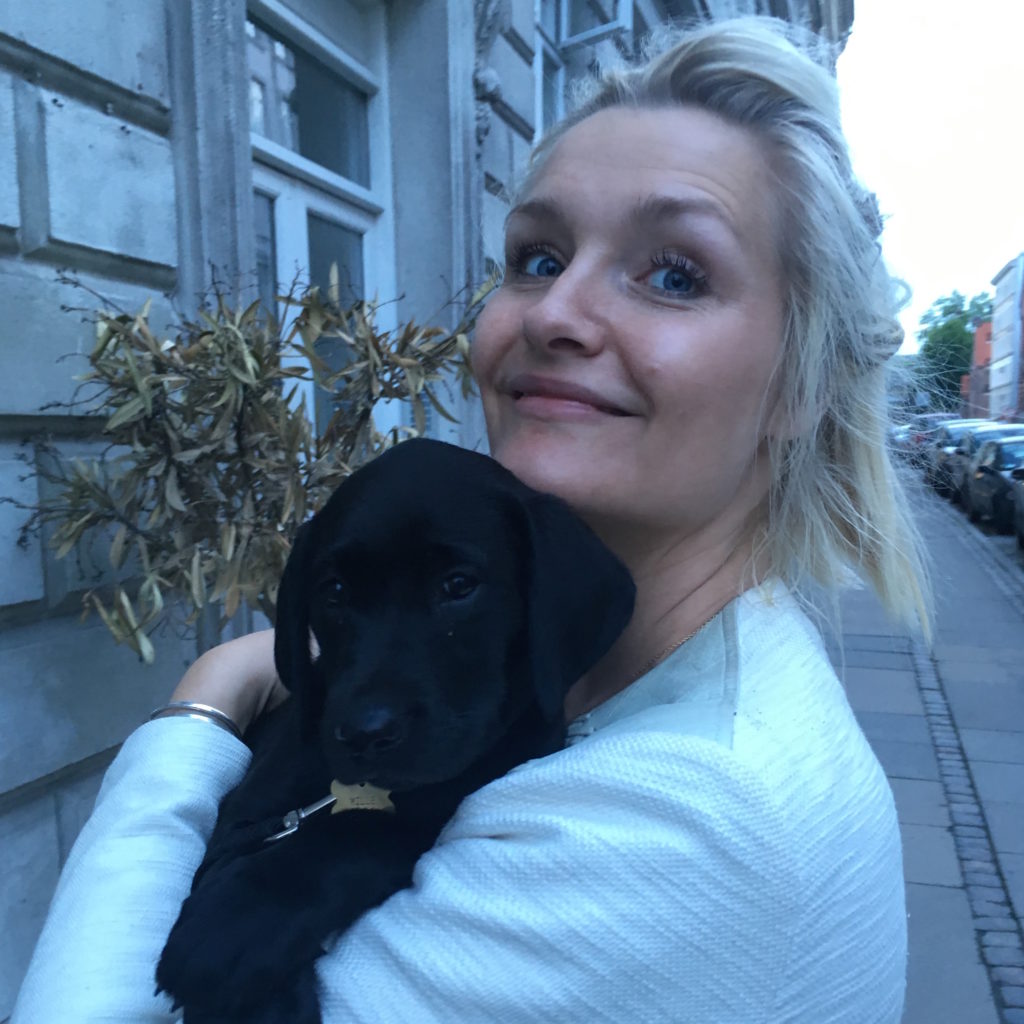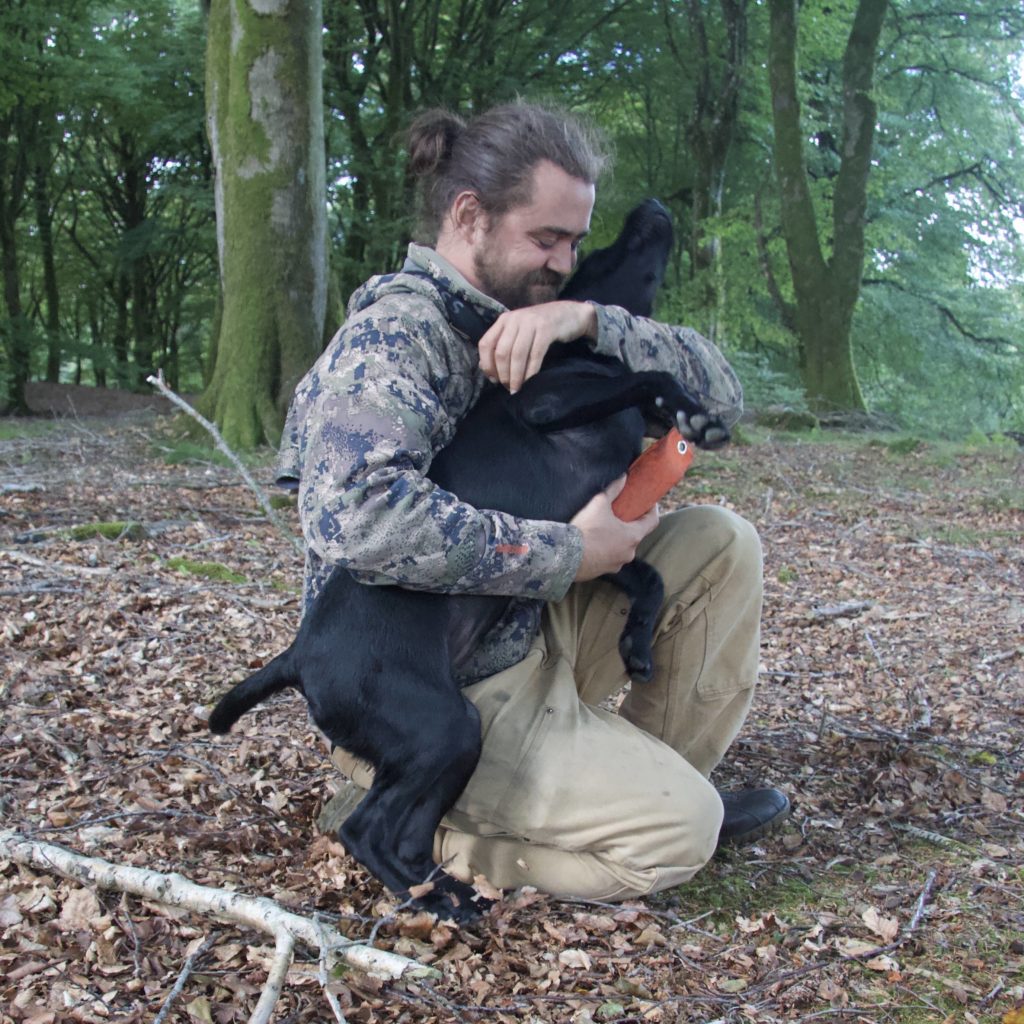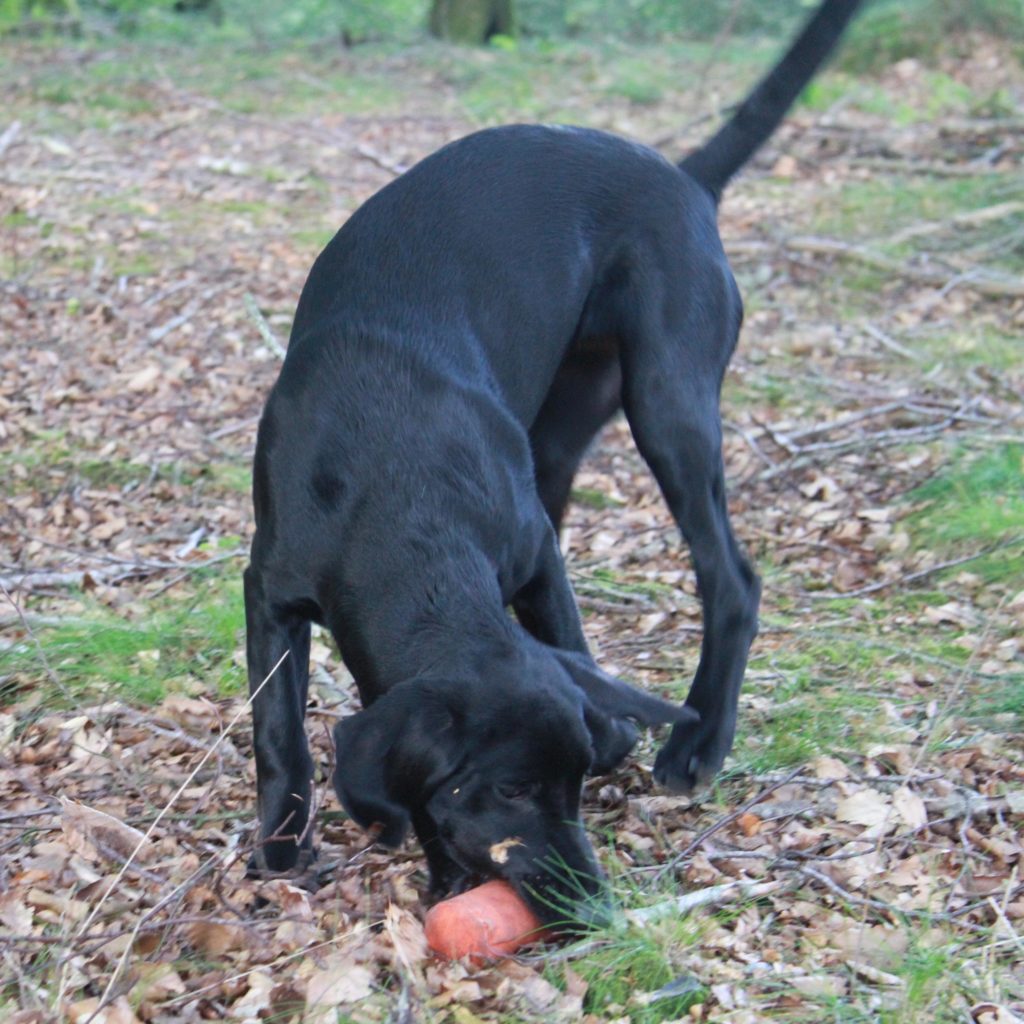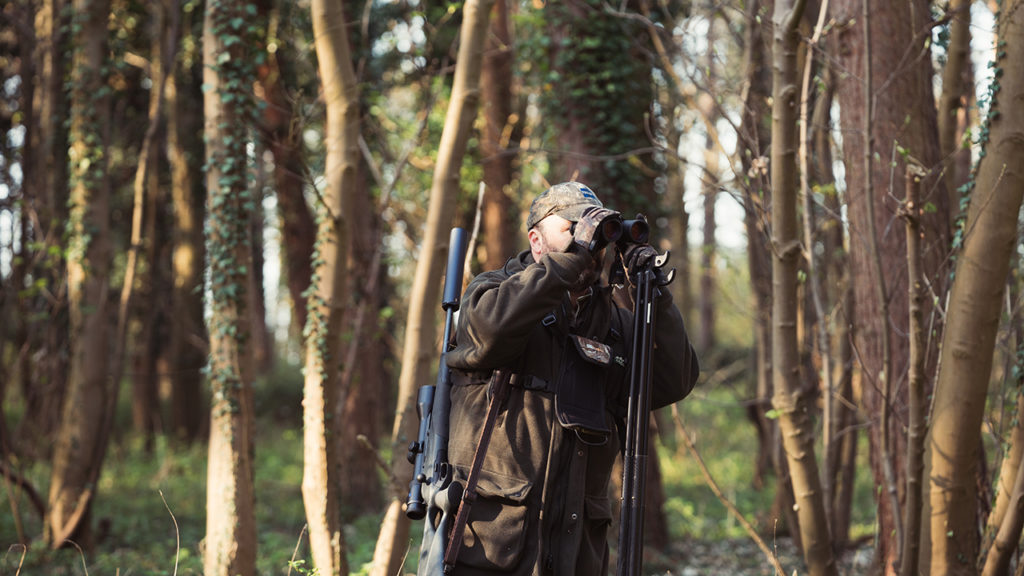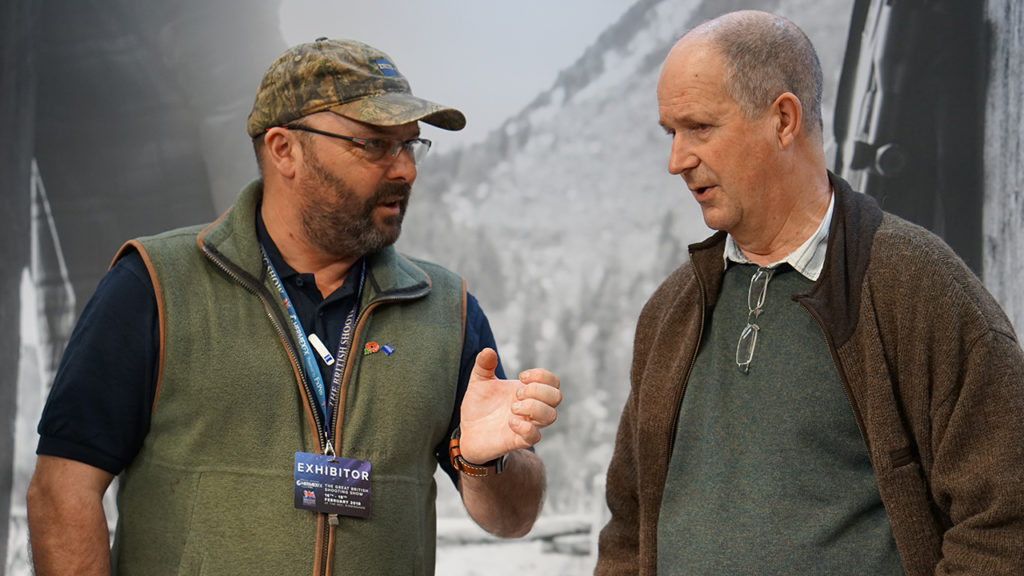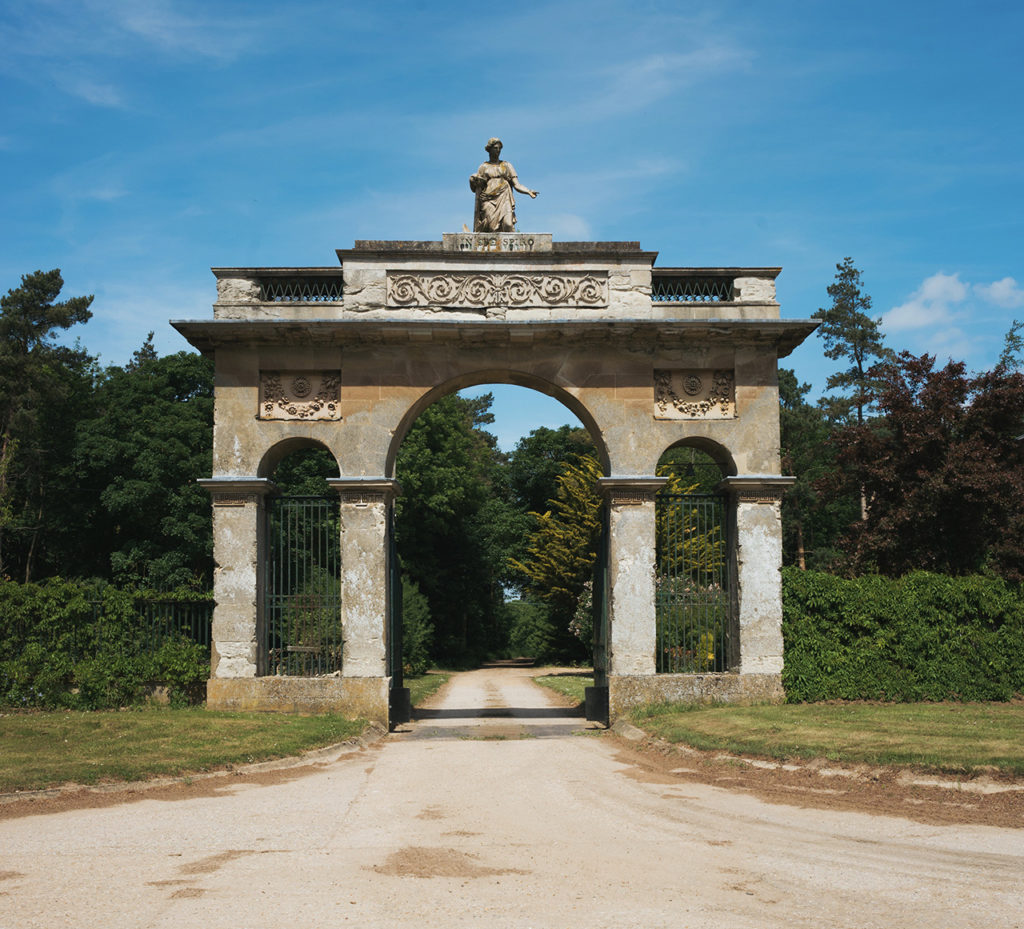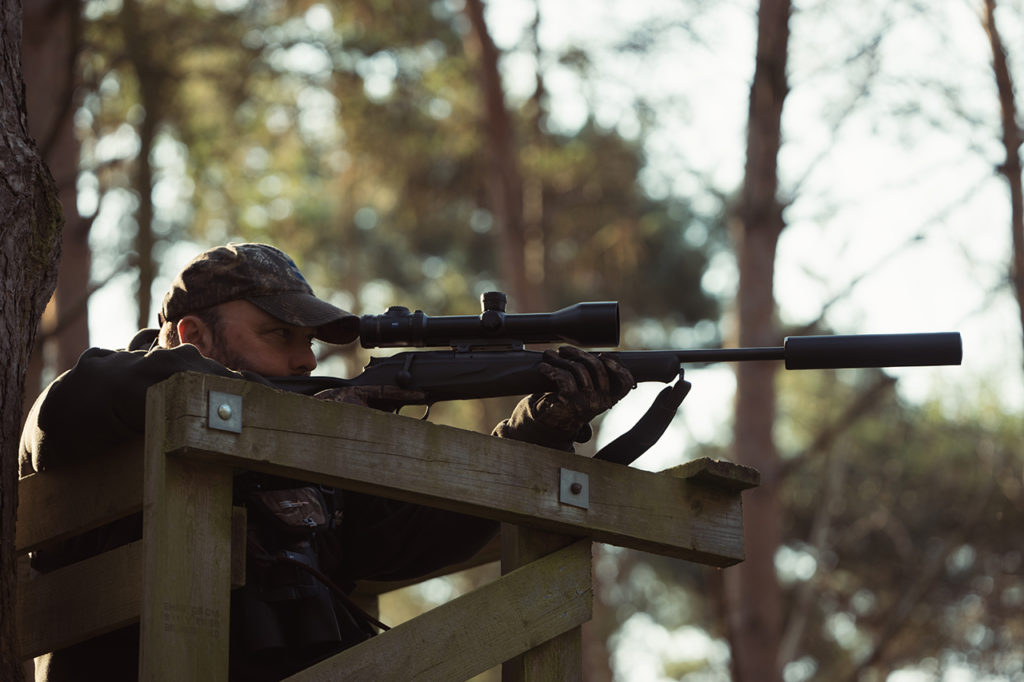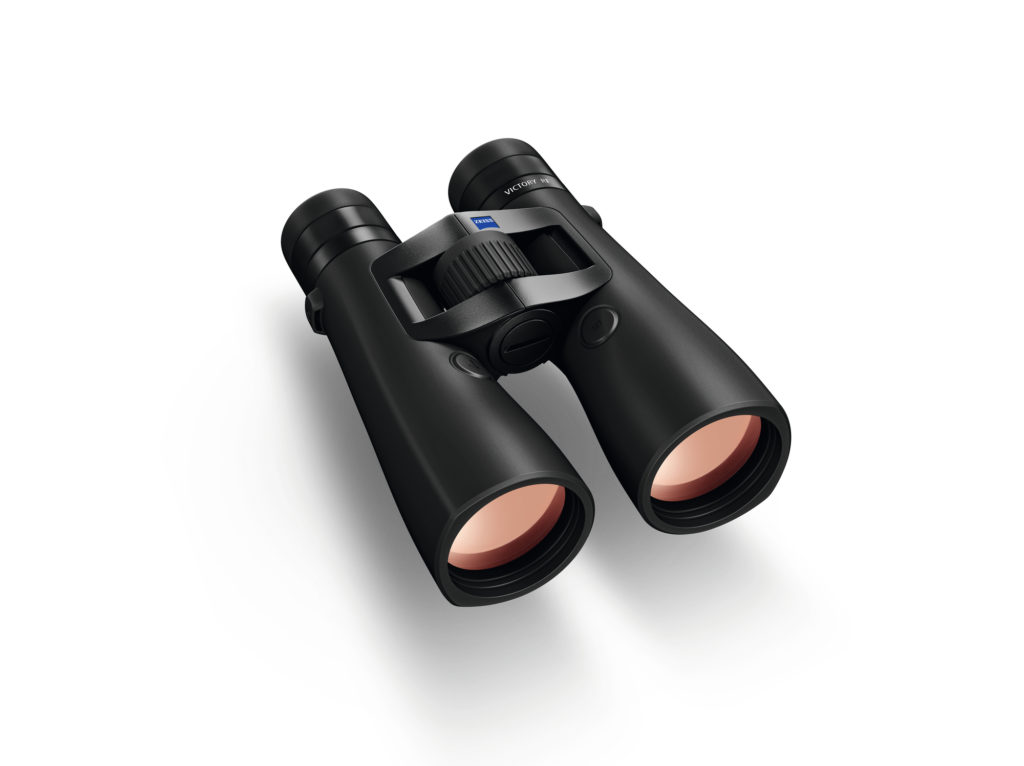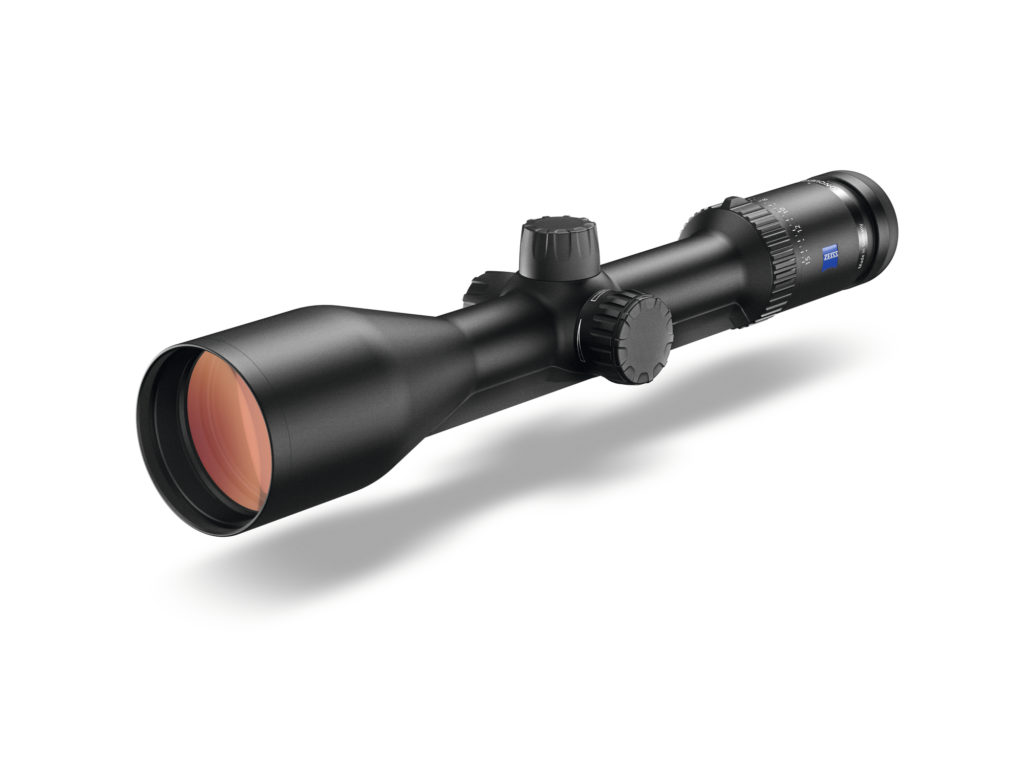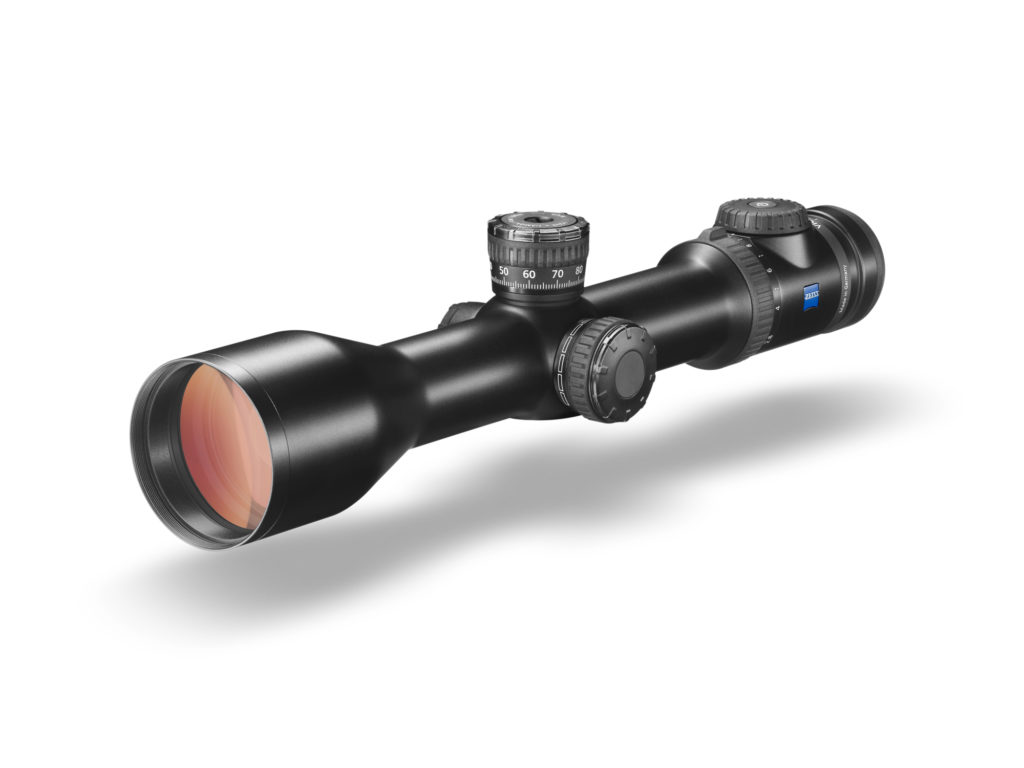An Interview with Spanish ZEISS Ambassador Pilar Escribano Reina
My passion for hunting comes from a family tradition that has remained unchanged for generations. This family relationship and our close connection with the great outdoors have shaped my heart and the love for nature. A large part of this is due to my grandmother, Ana Maria Benítez Cañuelo, who was a pioneer among hunters in the 1950s. I was further strengthened in my passion by my wonderful uncle Rafa Ruda, who let me shoot for the first time 20 years ago. That was my first shot!
I WAS BORN AND RAISED BETWEEN IMPORTANT HUNTERS. SINCE MY EARLIEST CHILDHOOD, I HAVE BEEN TAUGHT ALL ASPECTS OF HUNTING WITH CARE AND SENSIBILITY.
Pilar Escribano Reina
Now I enthusiastically immerse myself in every major project dedicated to hunting, such as my blog “Cupo Libre” and my TV show “Hunter Style”, which is broadcast on Spain’s most important hunting channel, Caza y Pesca TV.
Which area of hunting suits you the most?Without a doubt, hunting from a raised hide. It is simply the most practical. I was also able to gain some experience in stalking game. It is such a fascinating world, in which I hope to discover new species within Spain, but also outside of our national borders. This world has enchanted me.
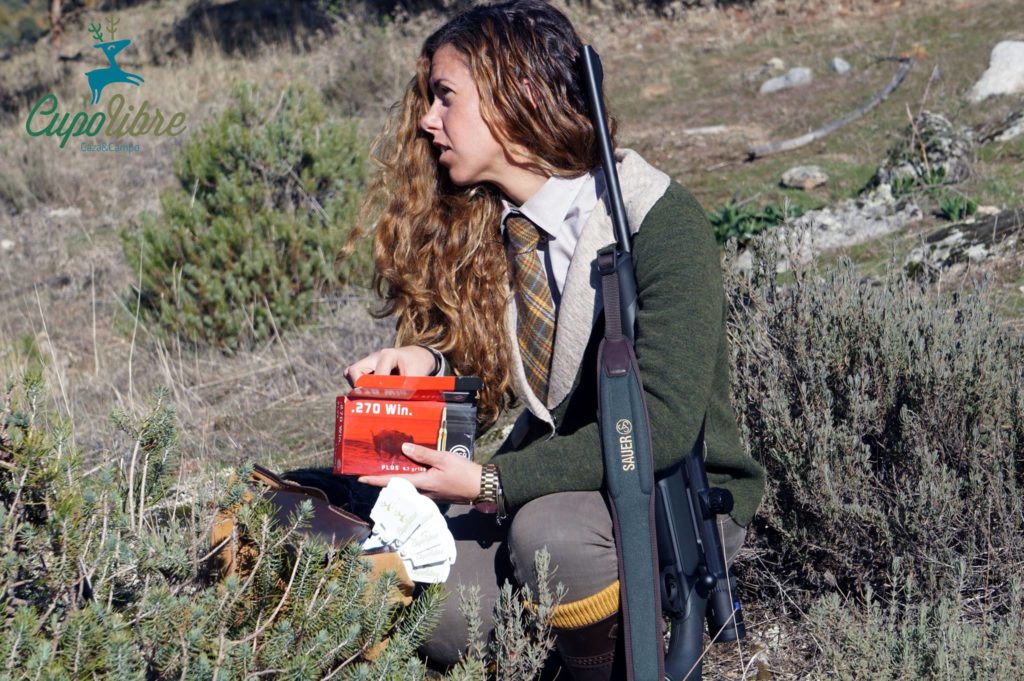
How did you get the idea to create a hunting blog? When did you start with “Cupo Libre”?I have been running my website “Cupo Libre” (www.cupolibre.es) for a little more than three years now. Later I ventured into social networks, blogs and the trade press. With the help of these different medias, I would like to introduce interested people to an ancient craft which does not receive enough attention in today’s society due to a lack of knowledge about hunting.
What is your goal with the blog?Through the blog, I wanted to share with the world how a woman copes in the world of hunting. I always aim to present the topic from a simple, dynamic, direct and real perspective. With “Cupo Libre” I don’t want to give lectures or give hunting lessons, but rather open this sometimes sealed topic up to everyone who is interested. But I don’t only talk about my own experiences, I also cover other aspects related to hunting, such as. B. gastronomy, nature conservation, fashion or hunting tourism. In short, I would like to open a small window for hunting life to a world that is facing increasing urbanization.
How do you explain the tremendous success that “Cupo Libre” has experienced in such a short time?I don’t think that “Cupo Libre” – at least not yet – has been a tremendous success. It took constant work and dedication over the past few years. Unfortunately, I cannot invest as much time as I would like because of my professional commitments. But I am convinced that I can gradually gain more followers and readers who will encourage me to continue with this great project.
The originality is particularly remarkable. This is due to the high level of differentiation and the great work of other bloggers as well as the presence in various social networks (Facebook, Twitter, Instagram, YouTube, etc.).
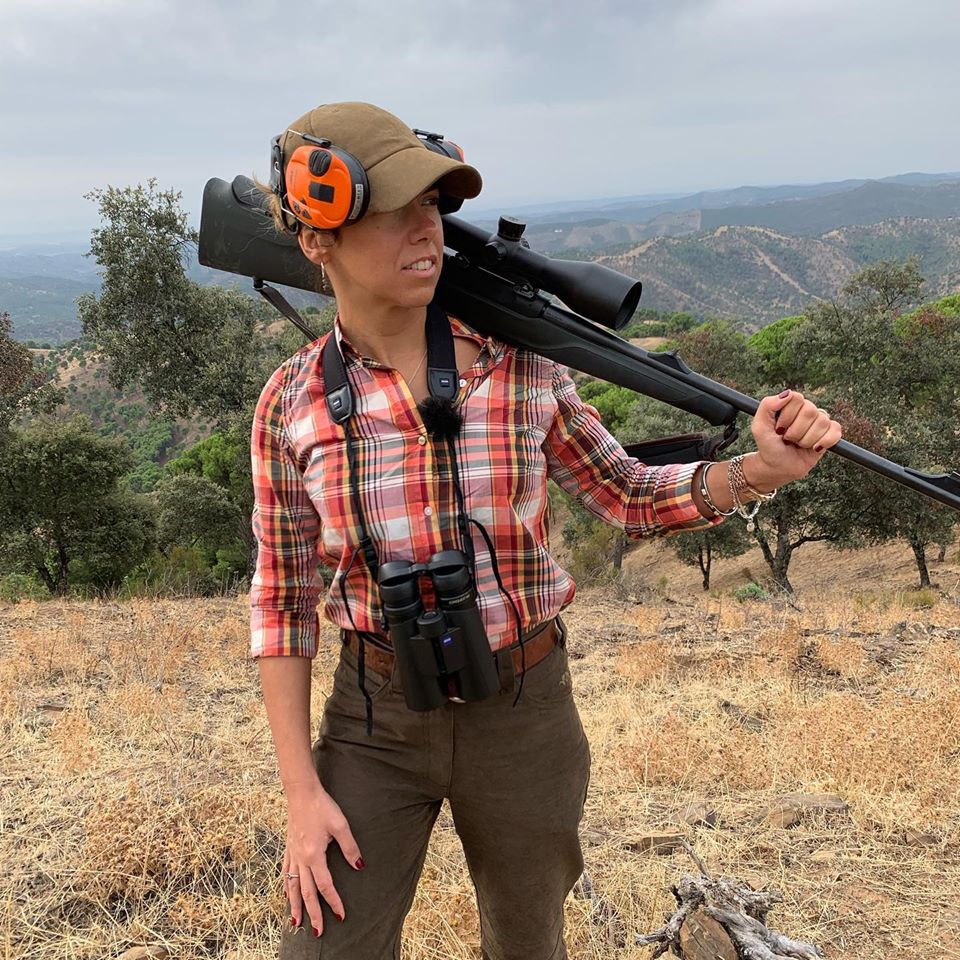
What is the main focus of “Cupo Libre”?On this platform I write about my hunting experiences while always highlighting one of the thematic pillars that make up “Cupo Libre” – Experiences, interviews, tours to charming places, curiosities of nature or game recipes etc. I am also lucky enough to be able to work with large and well-respected brands in the hunting and fashion sector, who let me test and publish their products on my various digital platforms. “Cupo Libre” draws from a comprehensive and diverse repertoire with which we can introduce nature and hunting as well as various market innovations to lovers and groups of people who have not yet had access to the topic. “Cupo Libre” is dynamic and young. With its fresh and innovative touch, the platform breaks through the routine and classicism of the industry.
“Cupo Libre” is a new and innovative idea that differs significantly from other blogs on the subject of hunting. The blog is mainly characterized by less aggressive content and clear statements. If today’s society were to familiarize themselves a little more with the subject of hunting, they could recognize their benefits and advantages for the conservation and handling of nature.
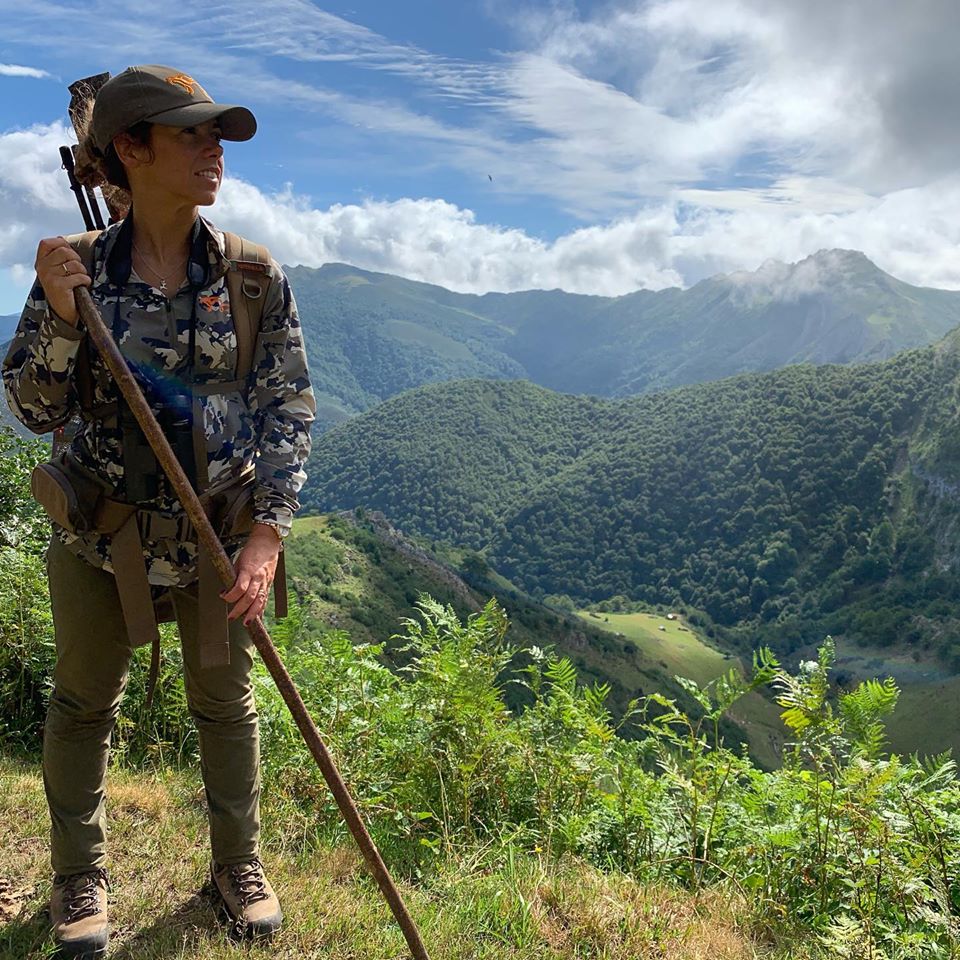
In general, how do you assess the role of women in the hunting world?As I mentioned in advance, I come from a family of hunters: my grandma was a hunter, my aunts are hunters. So it’s normal in my family to be a hunter. I don’t think we have a different status. I believe women pursue hunting out of enthusiasm and not because they want to compete.
How do you think hunting will evolve over time?At the moment, hunting is in a difficult position. As hunters, we need to show adequate respect and appreciation for game or our daily work. Often it is due to a lack of knowledge that people want to break with an ancient tradition. They simply don’t know about the importance of hunting for our rural environment and nature and that is actually the key to preserving the incomparable ecosystem and biodiversity of Spain.
What do you think of ZEISS optics?For me, ZEISS means quality, tradition and security. In my hunting family, every family member owns a product of the German brand. I still remember how I accompanied my uncles and aunts hunting when I just started. They were always on target with their old binoculars and riflescopes from ZEISS. More than 20 years later, some of these items are still in perfect condition.
I am currently using a ZEISS Conquest V6 2.5-15×56 ASV, which I use for driven hunts as well as stalking. I am completely satisfied with that. It is ideal for hunting in Spain.
Equipment used
Entrevista Cupo Libre
Mi pasión por la caza nace de una tradición familiar que ha ido transmitiéndose durante generaciones. Este vínculo familiar y la estrecha unión que de siempre hemos tenido al campo, han forjado mi carácter cazador y amante de la naturaleza. Gran parte de culpa lo tiene mi abuela materna Doña Ana Mª Benítez Cañuelo, quien fue una pionera de las mujeres monteras allá por los años 50. Pero quién más afianzó mi afición, aún más si cabe, fue mi querido tío Rafa Ruda, cuando hace ya 20 años, me dejo tirar por primera vez. ¡Fue mi primer lance!
Nací, crecí y vivo entre una saga de grandes monteros y cazadores. Desde muy pequeña me han ido enseñando, con esmero y delicadeza, todo lo que rodea a esta actividad.
Pilar Escribano Reina
Ahora sigo ilusionada e inmersa en grandes proyectos que tienen la caza como elemento principal, como son mi blog “Cupo Libre” y mi programa de televisión “Hunter Style” que se emite en el canal de caza más importante de España, Caza y Pesca TV.
¿Cuál es la modalidad que más te gusta?La montería, sin duda, y además es la que más práctico. En el rececho ya he realizado mis primeros pasos. Es un mundo apasionante y que espero ir descubriendo poco a poco consiguiendo nuevas especies, tanto en España, como fuera de nuestras fronteras. Me ha cautivado.

¿Cómo nació la idea de crear un Blog de caza? ¿Cuándo lanzaste Cupo Libre?Nació de la necesidad de querer comunicar al mundo como una mujer vive una actividad tan poco conocida como es la venatoria, siempre desde un punto de vista sencillo, dinámico, directo y sin artificios. Con Cupo Libre no pretendo asentar cátedra ni dar lecciones de caza a nadie, pero si intento abrir el hermetismo que en ocasiones este mundo encierra a todas aquellas personas que a él quieren acercarse. Además, no sólo lo hago contando mis propias experiencias, sino poniendo en valor otros aspectos muy relacionados con ella, como son la gastronomía, la conservación, la moda o el turismo cinegético, entre otras.
¿Cuál es el objetivo que buscas con ella?Son ya más de tres años desde que lancé mi página web de Cupo Libre (www.cupolibre.es), que luego ha ido dando paso a sus respectivas Redes Sociales y blogs en prensa especializada. Con todo ello intento poner en valor una actividad ancestral, no muy bien vista por la sociedad actual, dado el desconocimiento que se tiene de la misma, y del propio medio rural.
¿Cómo explicas el rotundo éxito que ha tenido Cupo Libre en tan poco tiempo?No considero que Cupo Libre haya tenido, aún, un éxito rotundo. Es el trabajo constante de estos años de dedicación temporal, pues mis compromisos laborales no me permiten dedicarle el tiempo que me gustaría. Es cierto que poco a poco voy teniendo más seguidores y lectores que me animan a continuar con esta bonita causa.
Lo que es más llamativo es su originalidad, pues es muy diferenciado y completo respecto a la gran labor que hacen otras blogueras, pues además de tener presencia en diferentes RRSS (Facebook, Twitter, Instagram, YouTube, etc.), también cuento con una web personal en la que escribo mis propios artículos y elaboro contenidos audiovisuales.

¿Cuál es el contenido principal de Cupo Libre?Procuro contar cómo es mí día a día, siempre visto desde algunos de los pilares temáticos que construyen Cupo Libre. No faltan vivencias, entrevistas, visitas a lugares con encanto, curiosidades de la naturaleza o alguna que otra receta a base de carne de caza, etc. Además, tengo la suerte de contar con la confianza de grandes y prestigiosas marcas del sector de la caza y la moda, quienes me dejan sus productos para que los pruebe y pueda darlos a conocer en mis distintos soportes digitales. Un amplio y variado repertorio con el fin de acercar el campo y la caza y algunas novedades del mercado, tanto a los aficionados, como a aquellos que la desconocen totalmente.
Cupo Libre es dinámico, juvenil, rompe con la rutina y el clasicismo del sector, dando un toque fresco e innovador. Además, es un espacio de entretenimiento para todos los amantes al campo en general.
La idea de crear un blog de estas características nace de mi pasión por la caza, una actividad muy arraigada en mi familia y que ha ido transmitiéndose durante generaciones. Este vínculo familiar y la estrecha unión que siempre he tenido al campo, han forjado mi carácter de cazador y amante de la naturaleza.
Cupo Libre es una idea nueva, innovadora y muy distinta de otros blogs de carácter cinegético. Principalmente se caracteriza por ser un espacio poco agresivo aportando una seña única.
Desde Cupo Libre pretendo comunicar al mundo como es mi estilo de vida, ligado a una actividad tan poco conocida como es la venatoria, siempre desde un punto de vista sencillo, dinámico, directo y sin artificios. Con Cupo Libre no pretendo asentar cátedra ni dar lecciones de caza a nadie, pero si intento abrir el hermetismo que en ocasiones este mundo encierra, a todas aquellas personas que a él quieren acercarse.
En resumen, es abrir una pequeña ventana dentro del mundo cinegético, a un universo global cada vez más urbanita. Es necesario acercar el campo, la naturaleza, la caza y todo lo que los rodea, tanto a los aficionados a esta actividad, como a quienes muestran curiosidad por ella.
Conociendo un poco más la actividad venatoria, la sociedad actual sabrá las ventajas y virtudes que ésta tiene en la conservación y gestión del medio natural.

Desde un plano más general ¿Cómo valoras el papel de la mujer dentro del mundo cinegético?Tal vez, últimamente, la presencia habitual y participativa de la mujer en la caza, haya dado una apariencia más “sensible” a un mundo considerado de hombres, pero este no es mi caso.
Como he dicho anteriormente, vengo de una familia de cazadores, mi abuela era cazadora, mis tías son cazadoras, por lo que en mi casa ser mujer cazadora es algo normal.
Por lo tanto, no creo que tengamos un papel diferente y que demostrar más por ser mujer en el mundo de la caza, ya que esto es una afición y no una competición.
¿Hacia dónde crees que camina la caza?Actualmente la caza no pasa por un buen momento. Si nosotros los cazadores no sabemos darle la dimensión necesaria, aportándole el respeto y valor que se merecen a cada una de nuestras piezas abatidas o a las simples jornadas de caza que disfrutamos con los nuestros, no iremos bien encaminados.
La cohesión y firme defensa de todos los entes que actualmente existen en nuestro país, es fundamental para ello. Son muchos los ignorantes que con un total desconocimiento de lo que implica la acción venatoria en nuestro medio rural y natural, quieren acabar con una actividad ancestral y que ha sido clave en la conservación del envidiable ecosistema y biodiversidad que tenemos en España.
¿Cómo ves el futuro de la caza a medio plazo?Lo más inmediato pasa por crear un lobby unido, fuerte y dispuesto a defender a capa y espada la caza. Pero no debemos olvidar la educación y concienciación de los propios cazadores, cuidando la imagen que damos del desarrollo de la actividad tanto en RRSS como en medios generalistas. Es fundamental saber comunicar y expresar más allá de nuestro entorno cuál es el papel de la caza, poniendo el valor que tiene para las miles de familias que viven de ella, así como la herramienta fundamental que es para la conservación de la naturaleza. Algo que de una forma modesta y sencilla pretendo mostrar a través de Cupo Libre.
¿Qué opinas de la óptica ZEISS? Hablar de ZEISS es hablar de calidad, tradición y garantía. En mi familia todos los que somos cazadores tenemos algún producto de la marca alemana. Aún recuerdo cuando acompañaba a mis tíos, en mis primeros días de caza, como con sus antiguos prismáticos y visores ZEISS abatían limpiamente sus piezas en las monterías. Más de 20 años después, alguno de ellos aún conservan en perfecto estado estas piezas.
Actualmente cazo con un ZEISS Conquest V6 2,5-15×56 ASV, que utilizo para batidas y recechos. No puedo estar más contenta. Es perfecto para la caza que practicamos en España.
Equipamiento usado
Hunting Tahr in New Zealand
When it all comes together
Since its introduction to New Zealand in 1904, the Himalayan goat has fared very well in the rough and mountainous region around Mount Cook, and has now spread to a wide range of mountain tops and valleys of the Southern alps.
Its thick coat makes it impervious to the harsh climate of the mountains, and its ability to scale almost vertical mountain sides means that you will often find them in places, only reachable by helicopter or arduous hikes up the steep mountain sides. This makes the thar a great and challenging specie to hunt.
Knowing this full well, I was almost shocked when I found myself on a mountain side, looking at a beautiful bull thar trough my V8. We had just started out that morning, on what I expected to be a long and hard ordeal, crawling over sharp rocks and loose shale, trying to get into position of the wary thar. But suddenly, like a roebuck walking into the meadow in a far off European forrest, the big bull came up over the ridge towards us.
As he jumped from one rock to the other, it was clear from his limp that he had probably been injured – maybe from fighting other bulls for domination of the heard. I got a closer look at him trough the Victory SF.
After a couple of tough weeks hunting red deer with little succes, here I was, looking at a great thar coming towards us after what had seemed like a quick morning stroll on the mountain. Eager not to loose this opportunity, I had dropped down in a good steady rest on my backpack. And now I was waiting for the broadside shot.
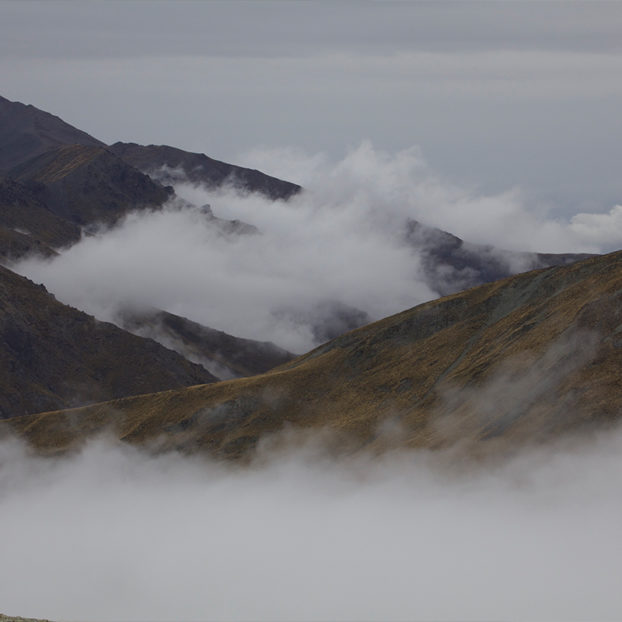
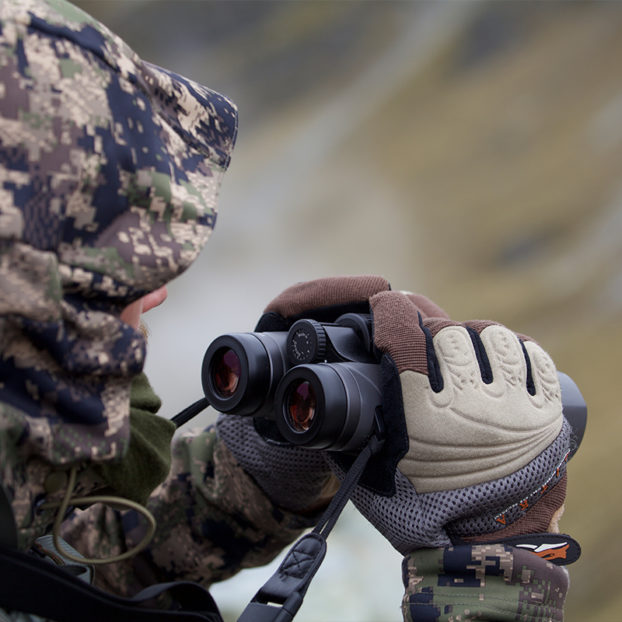
When you get an opportunity like that, there is always the risk that you are being over confident and that something goes wrong in the last second.
DAVID CARSTEN PEDERSEN
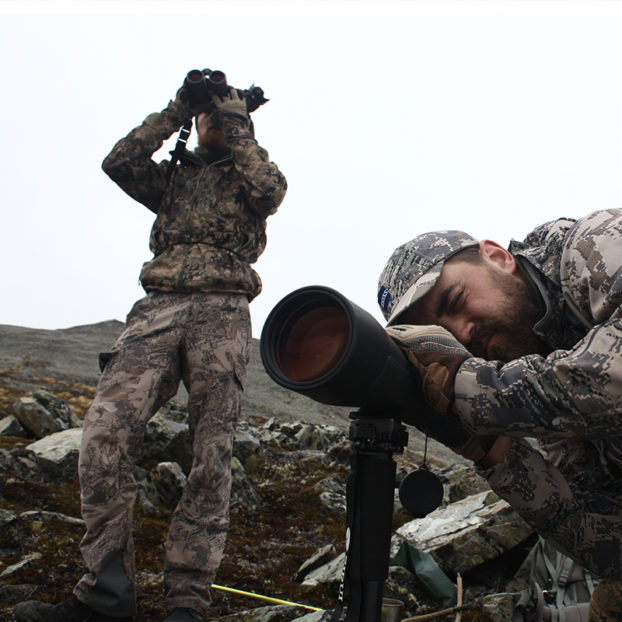
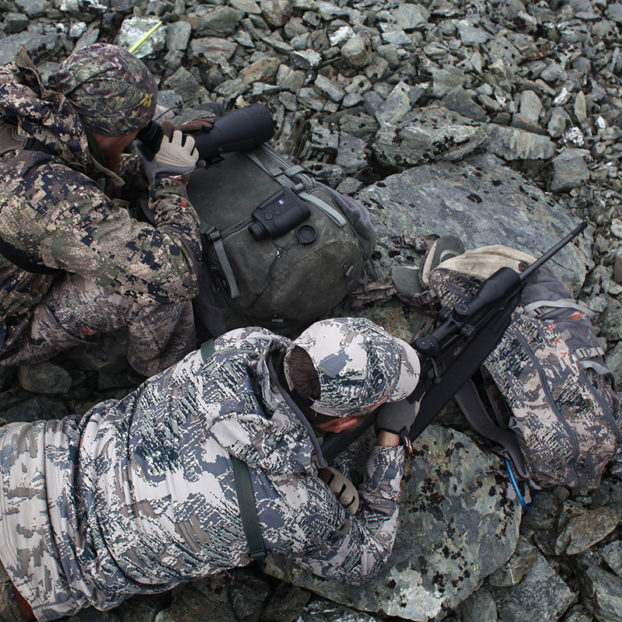
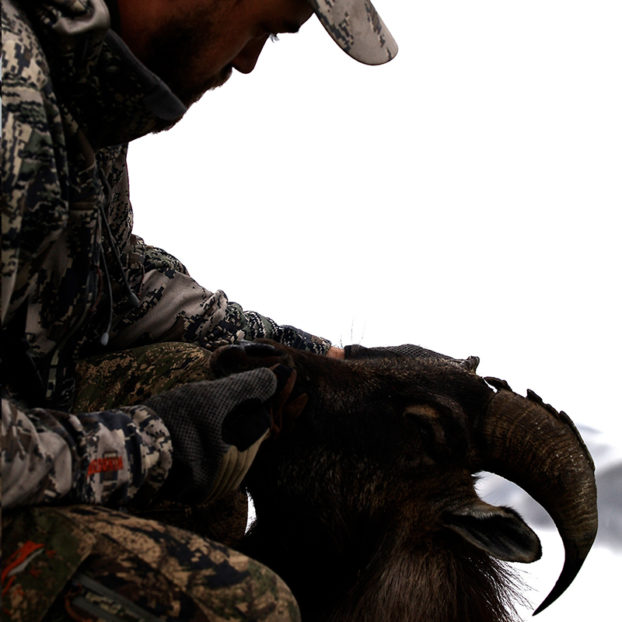
Moving closer, the bull suddenly stopped and turned his head to look straight at us. I dont know if he caught our wind. Or if his many years on the mountain had just taught him to be wary of everything. Knowing the range was good and not willing to wait and see if he would stand or run, I gently squeezed the trigger on the Sauer 404.
The light trigger broke like glas and even with the recoil of the 300 win mag, I could clearly see the shot land right behind the front leg of the big animal. As the bullet hit, he made a great leap forward, sprinting down the mountain side. And then he was gone. It was as if the long hard grass had swallowed him completely. The only thing left to testify what had happened was bullet casing on the ground and the sound of the shot, still echoing trough the valley.
“That was crazy, mate!” It was clear that my hunting buddy Ulrik was as happy as I. He had been hunting thar before and knew full well that what we had just experienced was luckier than we probably deserved. But as we went to look for the thar, we talked about all the parts that had to come together to make this happen. And the more we talked, the more agreed that luck was only a small part of it. We had done our homework and found an excellent guide who had showed us an area with plenty of thar. We had been training for weeks in the mountains and forests of the South Island, getting fit enough to move around in the shale without problems. We had brought gear that was made for the harsh mountains: optics making even the smallest details stand out, a rifle that could reach as far as we would ever need, and camouflage that made us disappear – even to the sharp eyes of the thar. It was this combination of research, preparation and the right gear that had made the hunt seem easy. The lucky part was being at the right place at the right time.
We found the thar less than a hundred meters from where he had disappeared. His beautiful head rested in the grass and his fur smelled of mountains and fog. “Now comes the hard part,” said Ulrik with a big grin. “You shoot him – you carry him” he said, smiling from ear to ear. Sometimes there is only the hard way.
HOW TO HUNT IN NEW ZEALAND
Hunting in New Zealand is a great experience for any hunter with an adventurous heart. As one of the few places in the world, it’s possible for foreign hunters to hunt on public land without a guide. Obtaining a firearms license and a hunting permit is easy and can be applied for online at the department of conservation’s home page, or at a local police station or DOC office. Be advised that hunting on public land can be physically challenging, and if you don’t have the proper experience and preparation, it can also be quite dangerous. Hiring a local guide is an easy and recommendable option for foreign hunters who want to make the best of their time in New Zealand. Spending time with the locals and learning from the vast experience and skills of the Kiwis is often as much a part of the experience as the hunt itself. There is also the option of hunting on large private areas. Here, the physical challenge will often be be less grueling, but the hunt can still present a good challenge for hunters looking for a great experience in New Zealand.
Equipment used
Long-rage shooting
Falconry: The Masters of the Sky
An interview with Sandra Jung, Germany’s youngest self-employed falconer
How did you get involved in falconry?I actually got into falconry by chance. Back when I was 16, a friend took me to a show featuring birds of prey. I was hooked by these fascinating creatures from the moment I got there. For many years, I helped out at the same falconry in my free time.
What does falconry mean to you?These days, falconry has become a cornerstone of my life. It might sound corny, but I live for falconry. My work and my free time are devoted to birds of prey, and I’m completely okay with this. I couldn’t imagine a life without these animals, and I really hope that things continue this way.
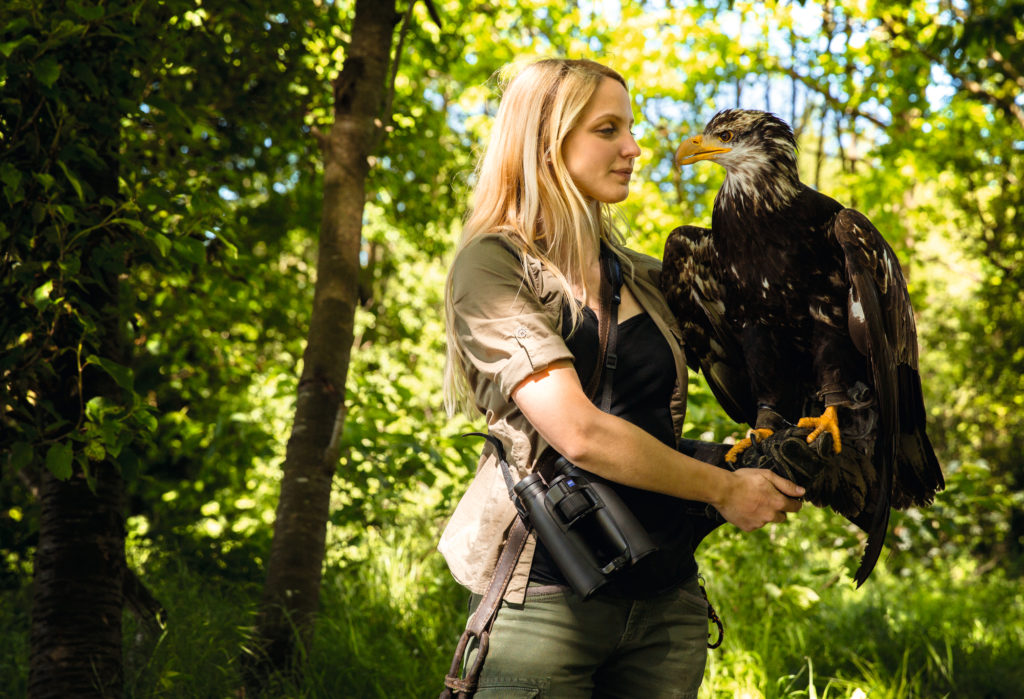
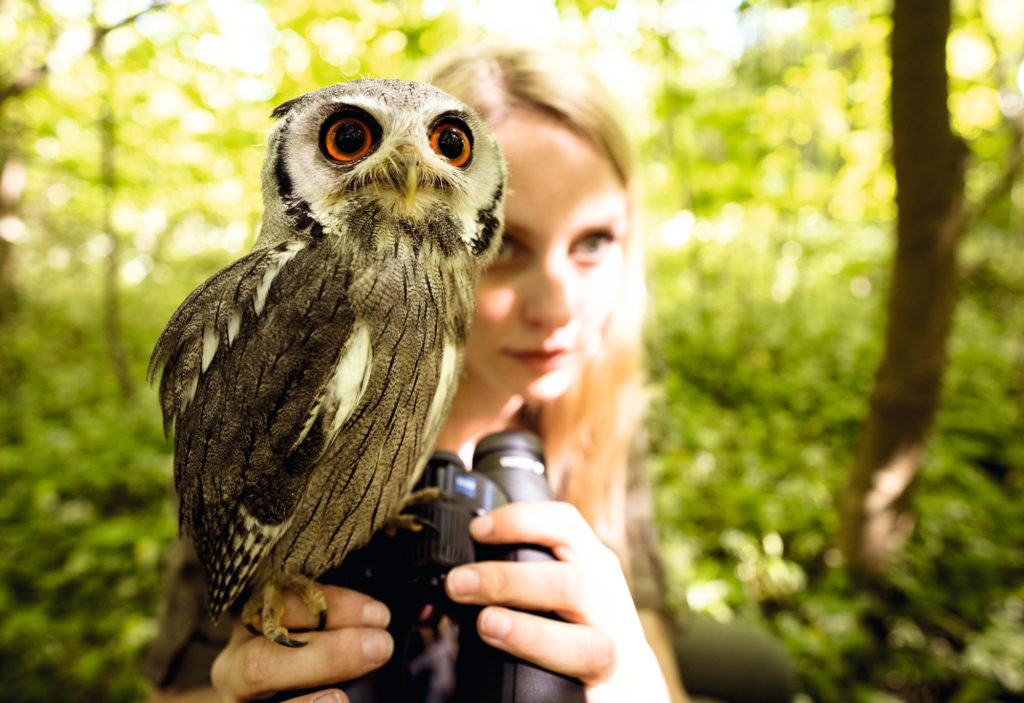
Why did you decide to write a book? The publisher approached me. I myself would never have dreamed that there would be so much interest in my life’s story. When writing, it was important to me to provide a positive and comprehensive image of falconry without getting too bogged down in the details so that the book would appeal to those starting out as falconers as well as people completely unfamiliar with this field. I think my book encourages the reader to follow their dreams and believe in themselves.
What’s the book about? The book follows my journey, starting with my first contact with these wonderful animals and continuing all the way to the falconry I run today. I describe the highs and lows – life almost never leads you down a straight path – and emphasize first and foremost that you should stay true to yourself and always follow your heart.
Is it possible to see you and your birds in person?Of course. The falconry at the magnificent Greifenstein Castle near Saalfeld in eastern Germany is open to the public from April through October.
What connection do you see between hunting and falconry?I hunt with my gun as well as with birds. Hunting is a welcome change to all the hard work during the high season. So in winter, it’s all about relaxing with the golden eagle at the falconry. Then there’s just me and the bird – with no one watching and no expectations. Still, I know how to enjoy the tranquility when stalking game throughout the year, giving me a chance to relax and take a deep breath. Out in the forest or the field, time passes more slowly. These breaks are certainly welcome.
What do you hope to do in the future?Of course, I hope to keep doing this job for many years to come. I also really want all the animals to stay happy and healthy and would like spectators to continue to come visit us at Greifenstein Castle.
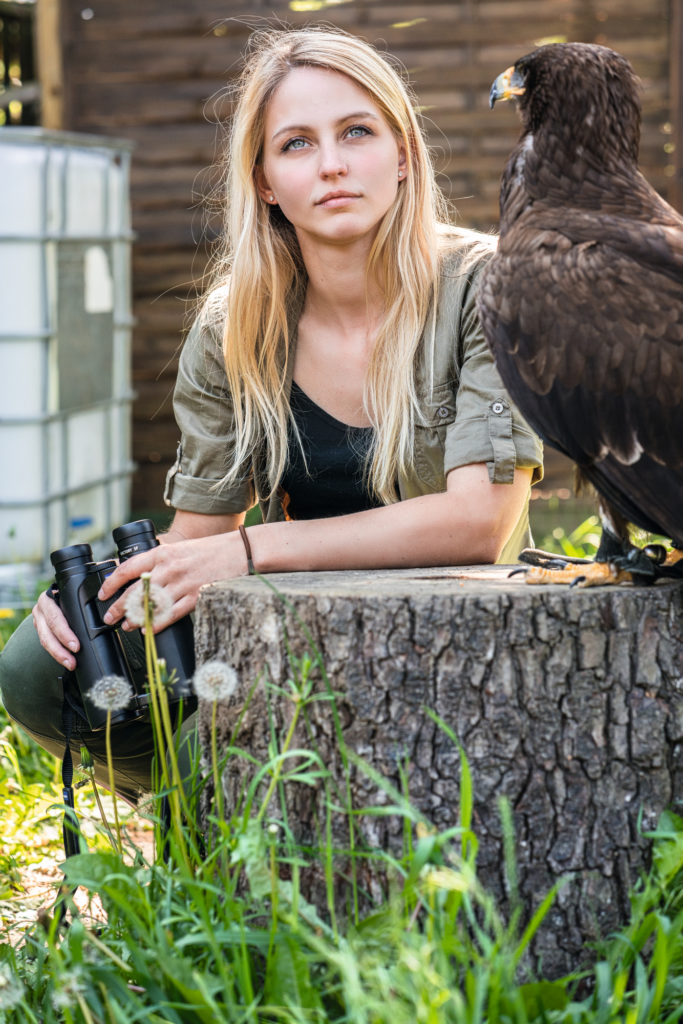
Crow Hawking
About driven hunts
Success factors and reliability
How did you find your way to hunting and what does hunting mean to you?My father is a passionate hunter, and I went hunting with him for the first time when I was five years old. He shot an elk on my first day – and I’ve been addicted ever since. From that point onwards, he took me hunting with him for elk, roe deer and hares on a regular basis, but as I got older he taught me how to hunt and shoot alone. Because he has his own shoot, I’ve always been able to hunt as much as I want. Growing up this way has made me thankful for what animals and nature can offer us. My father taught me that nature can be a huge resource for us if we treat it well. He also taught me how to respect animals and enjoy nature. I now have my own farm with my own hunting ground and can still hunt as much as I want. I’m also a teacher at a secondary school, which allows me to spend time outdoors with my pupils, bringing them closer to nature.
What are your special hunting experiences during driven hunts?When hunting in a different way – either in a new country or a different type of game – I have to be confident that my equipment is reliable. During a driven hunt I have to stay extra sharp, as this is not a common form of hunting in Norway and I’m delighted to have the ZEISS Victory V8 1.1-8X30 by my side. This is a steady and reliable scope for hunting when time is of the essence and it gives me the certainty I need.
Often the area is in the middle of the forest surrounded by lots of trees, resulting in predominantly short-range shooting. The animals also often move fast, and so a clear scope with low magnification is important as I need to see spot the animal quickly, but I also need to be able to see the whole animal to be sure of the surroundings. The V8 also has the red dot that makes me, as a huntress, more confident. With the red dot I know exactly where the bullet will hit when I pull the trigger, and it’s easier to remember the moment of the shot. The use of low magnification is also very helpful, due to it being easier to follow the animal from when the shot was taken until the animal is down.
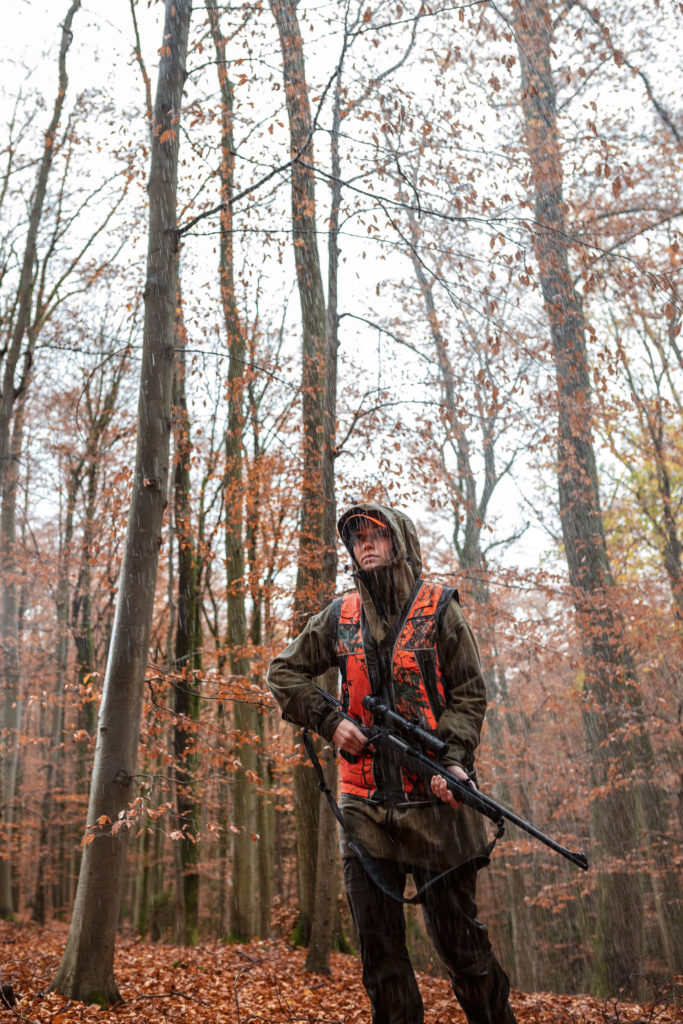
On a driven hunt I try to envisage all the different possibilities of where the animals might appear, which is almost impossible, as they are not easy to predict.
ANETTE DAHL
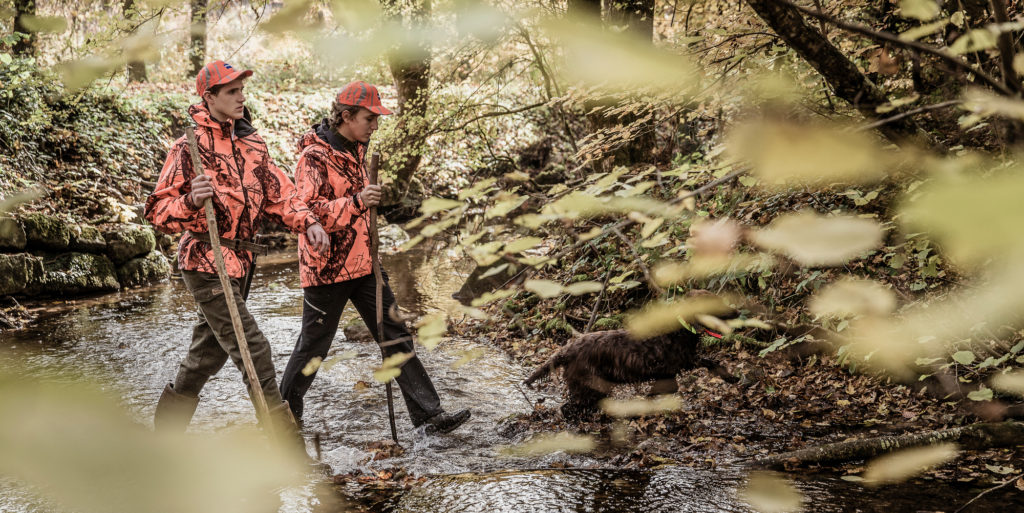
On my latest driven hunt in Germany, I got a fantastic high seat location. I had an old road behind me, forest on both of my sides and a small open area in front of me. In the early morning I learned from a German hunter that the first twenty minutes of the hunt are the most exciting, because at that time the animals first start to move and everything could happen. I was standing in my high seat with the rifle in my hands, ready and waiting to see if anything was going to happen in the woods… and it did.
On the right side of me two wild boars came out of the forest. I saw them before I heard them due to the heavy rain, and I had to act fast if I wanted to have the chance of a shot, so I mounted the rifle. With a well-fitted rifle and with a crystal-clear scope I could spot the first boar easily and shoot within seconds. I could easily see that the shot was perfect and that the boar had hit the ground. I was then able to move over to the next boar and repeat the success. The perfect match between the seconds of spotting the animals, the fine adjustment of the red dot and the general reliability of the equipment was just perfect. I could not have been as successful without my reliable companion, the Victory V8 1,1-8X30. I have been very lucky during my driven hunts and have been able to bring home several wild boars: for me there is no doubt that confidence in the equipment is one of the key success factors.
Equipment Used
Wild Boar Hunting at Night
Max Götzfried shares his experience about a lucky wild boar hunt in the Hessian Forest. And lucky he was!
Considering lawmakers, who seem to have a keen sense of male suffering, prohibit Sunday shopping trips and the ultimate punishment of a ‘visit to Ikea’, it’s surprisingly easy for me to get away and drive to the hunting ground, with pronouncements of “lovely weather today!” and “the dogs need a walk!” seeming to be all it takes. Early into a routine check of the first bait place in a meadow, my attention is drawn to a narrow footprint in a molehill – fallow deer? In fact, two further hills confirm it: at least one adult animal and a calf – a rarity in our little hunting ground. As the bait place has been attacked, I decide to venture a backache-inducing waiting game – and to sit it out until the morning. I would be more than able to capture each animal in the current crescent moon, optimally using my residual-light-intensifying ZEISS VICTORY 5.6 × 62 Night Vision and it would be even easier with the bright (without added auxiliary means) ZEISS V8 2.8–20 × 56, but there is one thing stopping me: the night-time hunting ban for fallow deer.
Only five meters from the feast does the fox begin to fear for its safety and sits down.
Max Götzfried
The chance of me setting eyes on one of those spotted friends during legal hours is low, but, as we all know, not shooting is also a missed opportunity. An hour before dusk, I move into position and wait for what should come along. Nothing appears for a long time other than two hares and three roe deer. The fallow deer has cleared the first hurdle; I can’t do anything else now – but there is movement… by way of a change, cunning Mr Fox is making no compromises and beeline’s straight to the bait place, meaning I hardly have time to bring my weapon gently into position.
Only five metres from the feast does the weak fox begin to fear for its safety and sits down inquisitively in front of me. There is no great skill involved in calmly setting the fine illuminated dot in the middle of the white chest. I assure myself once more with the night vision device that the robber is lying down and am about to lean back contentedly when I happen to notice something else scampering about.
The next fox approaches as if nothing has happened, also making a beeline to the bait and – synchronised swimmers couldn’t have done it any better – takes up position in the same way on the other side of the bait place. Really? I don’t stall for long; we have a small-game hunting ground … even number two is no big deal.
The night hunting ban still applies until the morning – but not to sows! Therefore, I decide to leave my stand hunting bag as a place warmer and to visit our suburban problem area first. I haven’t quite got out of the car yet when the night vision device almost slips out of my hand due to shock: about 150 metres in front of me, a proper chunk of a sow is conducting a thorough deworming of the wet meadow.
Ha! What’s going on today? I hardly need move, but I don’t like to shoot far in this area. Shoes off and proceed! I approach the sow carefully and nervously as she stands conspicuously, like an oil slick on a ski slope, in the short meadow with the city lights behind her. I’ve had her before me often in the past, but she either had small piglets in tow, was standing on the nearby railway tracks, broke calmly into the neighbouring hunting ground or had some other guardian angel watching over her.
What a lump! It can only be … Erna! The grande dame of urban sows!
Max Götzfried
Even if she’s a wild sow, she is my preferred pursuit – each year, she leads in a large number of new settlers who continually and brazenly populate the urban area. Just last week, I happened to see her cross a street a couple of hundred metres ahead with nine(!) young boars of almost a hundredweight, which, compared to her, looked like halflings. I look around, but Erna’s followers are nowhere to be seen.
In any case, since they are no longer dependent on her, I decide to seize the opportunity. But I have forgotten to turn the glass back down, meaning that, initially, Erna looks even more monstrous across the barely 20 metres’ distance. Because of the excitement, the fine illuminated dot dances about – barely any tracking in this problem area! I have to set it down again briefly. Then I deliberately aim at the shoulder blade to avoid her trying to escape. With an impressive strike of the bullet, the black locomotive slumps like a bag of flour.
With mixed feelings, I approach the old lady who, believe it or not, later turns out to weigh 103 kilos dressed. As I gaze somewhat sentimentally across her former territory, the queen’s entourage – the nine hundredweight sows – amble out of a gap between buildings a distance away, roused by the shot. They want to reach the safe haven of the railway embankment hedgerow. Quickly now! Pan! Pan! The second clearly reacts to the shot and falls back immediately, which sends the horde into complete disarray and has them fleeing in all directions.
Barely five metres ahead of me, a boar stops in its tracks to get its bearings – child’s play and 200 kilos of game in maybe two minutes. Today is a special evening indeed! Hours later, exhausted and sopping with sweat, I am arguing with myself at the hunting lodge – should I really have another go in the meadow? I have to go back to get my stuff at any rate!
I carelessly approach the pulpit, more plodding than prowling – another big black lump! The night vision device has me close to a heart attack: it’s not just anything standing in front of me, but an enormous fallow buck! I haven’t seen it’s like in this hunting ground before! And what’s far worse: I’m so tired and wobbly that he has long since noticed me. He gives himself the time to let my jaw drop audibly at his powerful frame and broad shoulders, and then he turns leisurely and walks pointedly away from me into the nearby wood.
He keeps stopping to turn and laugh at me. He is perfection. A one-off from a picture book – but it’s still night-time! I stare after him agog until he moves into the only small wood we have in our field hunting ground surrounded by state forest. Utterly perplexed by this extremely rare visit, I scramble onto the ladder and slump onto my sleeping bag. Not that I’m a big trophy hunter, but this fallow buck is impressive.
I have only ever seen such a strong stag one in over twenty years – and then this!
Max Götzfried
Suddenly, my face brightens just like the dawn that gradually surrounds me as if on command. What is the fallow buck even doing in this little wood? That’s no safe place for him! I have a tiny chance because to my left, there are 20 hectares of almost transparent timber forest – but to my right there are more than 1,000 hectares of state forest with masses of young beech trees. With the luck I’ve had so far, I want to give it a go. I feverishly observe the edge of the wood half in position. Behind our wood and to the right is a bare field. To the left is a marshalling yard – the fallow buck can only turn here and has to go past me somehow! I fumble the safety mechanism nervously, check the glass, continually eye the meadow… There! No. It’s a hare… There! Nope. That weed bush has been there all night. Or there? Slowly, a long way back, the merest suggestion of a movement into the meadow, then an expansive fallow buck – he’s realised his mistake! Like a statue, he checks the ground where he discovered me before.
He seems uncomfortable at the thought of having to pass by this place again now. How to stay calm? It’s certainly more than 200 metres to the fallow buck. No trifle for a ‘keen marksman’ like me. I switch to 20×, correct the BDC (ASV) – and wait for “the’ step”. But the statue stands still. And stands. And stands. What seems like an eternity that leaves me waiting desperately in position. Oh my word! The fallow buck is turning again; the stag is checking ahead – almost… my rival moves majestically into the open and checks in my direction once again. Now or never. The flight of the HIT projectile in .30-06 lasts what seems to be a lifetime, but it finds its target with a slap. The old fallow buck rears up one last time – and sinks into the meadow. I could never have repeated it – my hands are shaking too much. What a night! I have to pull myself together before I approach El Capo and take a look at his scarred body in awe. For the second time in such a short period, I am torn. An unusual guest – an abrupt visit. Only a little while later does the joy of the slay set in…
Equipment used
Wild Boar Schnitzel
A Hunting Trip for Capercaillie
In the Heart of the Winter.
A hunting trip for capercaillie to the far north of Scandinavia turns into a journey of self-discovery for ZEISS hunting ambassador David Carsten Pedersen.
“It’s been really good to hunt with you.” The statement came from one of the greatest hunters, I have ever met. The man was Tommy Holmberg, the legendary hunting guide from Swedish Lapland, who had once taken a man-eating bear. We were both lounging besides a small wood stove, tired after some hard and successful days of hunting moose. In the few days we had hunted together, we had become great friends, and his praise meant a great deal more to me, than I think he knew. “But you have to come back for a capercaillie hunt in the winter. That is really something really special. That is where you really get to experience the spirit of Swedish Lapland.” Knowing that I had to go back the next day, I was all ears and wide eyes for more adventures in the future.
“It’s not an easy hunt though.” He said in the long low dialect of the Northern Swedes. “You hunt on wooden skies. Shoot very far. And it can get really cold”. He said this with the same matter-of-factness in his voice, as he talked about everything else. In Lapland, they don’t spend unnecessary amounts of words on anything. So, if Tommy said it was a good hunt, then that’s what it was. And of course, I told him I would be back. At that point Tommy could have told me to crawl inside a bear den and hug a sleeping sow, and I would have done it with a smile. All I could dream about was coming back to this place above the arctic circle, to hunt the royal bird of the woods: The Swedish capercaillie.
It’s is going to be really cold, buddy. You better dial in the right temperatures.
David Carsten Pedersen
A few years later I found myself at the shooting range with my good friend Nikolaj. We were going to visit Tommy in Lapland to hunt capercaillie. And we were expecting some very long shots under extreme temperatures.
Right now, we were discussing the effect that temperatures have on the ballistics of the bullet. “The bullet drops about 0,3 TS for every 20 degrees difference, give and take, so we better take that into consideration” Nikolaj was telling me, while we were setting up the ASW+ for the coming hunt. “And it looks like it’s going to be bloody cold, mate” he said with a smile on his face. The weather forecast predicted, that it would drop to -20 during the day. This would mean at least 30 degrees difference to the relative warm conditions, we were experiencing at the range.
But we had both been to Lapland before, and we were accustomed to hunting under hard conditions. Packing wool and multiple layers of clothes, we were not that worried, that we could keep warm. And after confirming the ballistics in the ZEISS Hunting App, we felt confident, that any shot we were presented with, would be possible to take, even on such a relatively small target as the vitals of a capercaillie presents at long range. The only thing left now was to pack all our stuff and ready for 4 days above the arctic circle.
Welcome back to swedish Lapland, my friends!
The small bald man with the long beard and the big clothes greeted us with a hug, that would fit a bear, the moment we stepped out into the airport in Lulleå. With shining eyes and a broad grin, Tommy Holmberg was every bit as grand, as I remembered him the last time I visited Swedish Lapland. “I don’t know if you checked the weather forecast, boys. But it’s going to be really cold”. He continued in a tone that I hadn’t heard before. Something was up. When we pulled out of the airport in his big Highlux, we drove straight into a traffic jam. A herd of reindeer were blocking the road in front of us. Every car slowed down a crawl, while passing the docile animals.
“I really hope it’s only going to be around -20 C°” Tommy said, in the same voice as before. “But it looks like it’s going to be a lot colder than that. Maybe even -30. We will be lucky if we get one or two birds. But I have to tell you, that we might not see any birds at all”. Driving towards our destination on the frozen highway, we talked a bit about this.
If it was too cold, the birds would not leave their dens to feed in the treetops, but stay under the snow, preserving heat and waiting for warmer days. The only way to spot them was to look for tracks in the snow, breathing holes and middens, and then try to flush them from their burrows. It looked like it would be a couple of hard days on skies. Sitting in the warm car, we had no idea just how hard it would actually get.
Looking for birds in a freezer
We were skiing as quietly as we could trough the frozen landscape. After almost a day on the long wooden skies, finally we had spotted a capercaillie midden under the snow, and tracks of the wings where it had taken to the sky. Now we were trying to find out where it had landed. And maybe even get a shot.
If you haven’t tried hunting capercaillie before, the technique is actually quite simple. You put on some very long wooden skies, with high tips that cuts through the icy top layer on the snow. Then you stalk through the forest, bogs and hills trying to spot the birds when they feed on pine needles. You only hunt for males, spending a lot of time glassing the tree line for their big black silhouettes. When you spot one, you try to stalk into range, making sure the birds don’t see you. The shot is often taken from a lying position in the snow, at ranges from 200 meters and up. This all sounds pretty simple. Until you have to do it in real life.
Unless you are a native to northern Scandinavia, chances are that you won’t have a lot of experience with the ultra-long wooden cross-country skies of the Sami. Combine this with the fact that there is about 1,5 meter powder snow everywhere and you have to cross through thick forest hills and rivers, you start to get an idea of how physical this hunt really is. And then, there is the speed. In order to get a good day’s hunt out of the short time span of the winter daylight, you have to ski hard and fast. After the first 200 meters you start sweating heavily. If you don’t regulate your temperature you will start getting wet, and risk getting hypothermia. Taking off layers of clothes means you have to keep up the pace or risk getting cold again. Taking a rest means putting on clothes. Breaking a binding or even worse, breaking a leg, can result in death. In short, it’s not as easy as it sounds. But we were having a great time.
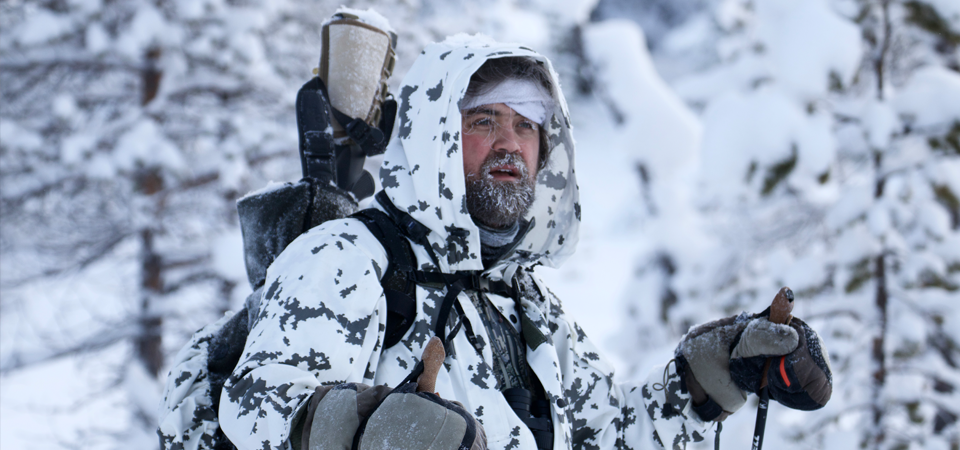
“I think he might have flown that way. If you go left around the bog, I will go right. Signal me if you see something” Tommy proclaimed with the same certainty, that he had been guiding us all day. If there ever was a bird in this vast frozen landscape, he would surely find it. Trusting him completely, Nikolai and glided away through the trees, breaking the surface with a swish. The sun was already going down again, after only a few cold hours in the sky. Stopping later for a snack of nuts and chocolate, we checked our thermometers. It had dropped to – 32. And besides the midden, we had not seen any sign of life.
“I have never been in a place this dead.” I thought to myself as we scanned another tree line, trying to force a bird into existence. It’s as if we are on another planet, a beautiful and dead planet with organic silica in the shape of trees, covered with a thick blanket of snow. Nothing moved. Not even the wind. Everything was frozen and quiet. The only thing of warmth in this gigantic deep freezer, was three men pushing through the snow, into the mountains, towards a bird that might never be there.
When the sun went down on the second day the temperature had dropped to -38. We had been skiing hard the whole day, and now we were sitting on our skies in the snow, eating our meal of hot reindeer soup, and cherishing our big puffy jackets, before heading back on the skies towards the huts. We had not seen anything all day. Not a single living animal. Only the enormous white wasteland of ice and snow. We had at least 7 kilometers off skiing before we were home. This time, the sun would be down and we would be skiing under the lights of our headlamps.
The mood was good, but the temperature was starting to get to me. It was almost physical. A hard cold that stung in the nose when you breathed and sapped the warmth out of everything. Our beards were frozen and we had ice in our eyelashes. Hugging my warm mug of soup, I couldn’t blame the birds for hiding underneath the snow. Anything that moved outside would die. Even Tommy was obviously affected by the cold. We needed to get back on the skies and make our way home.
And that’s when things started to get really serious. It started out with my toes. I’ve always had bad circulation in my feet. So, I’m used to not having any feeling in my toes. But no matter what I did, they could get warm.
I didn’t think about it at first. It just started as a creeping coldness that seeped up through my feet and into my body. Little by little, the cold was everywhere. I couldn’t focus on anything else. It was everywhere. In my mind I knew that I was going home. I just had to keep my head and find a place inside where I could keep warm. And I would be home. So that’s what I did. In the darkness off the winter night, with the moon shinning cold white light over the frozen forest, I reached inside and found a bubble of warmth. It felt as if I left my body and saw myself from the outside. Around me was the feeling of the forest, the hills and the lakes. I knew, I was cold all the way to my bones. But somehow, I was warm. And laughing.
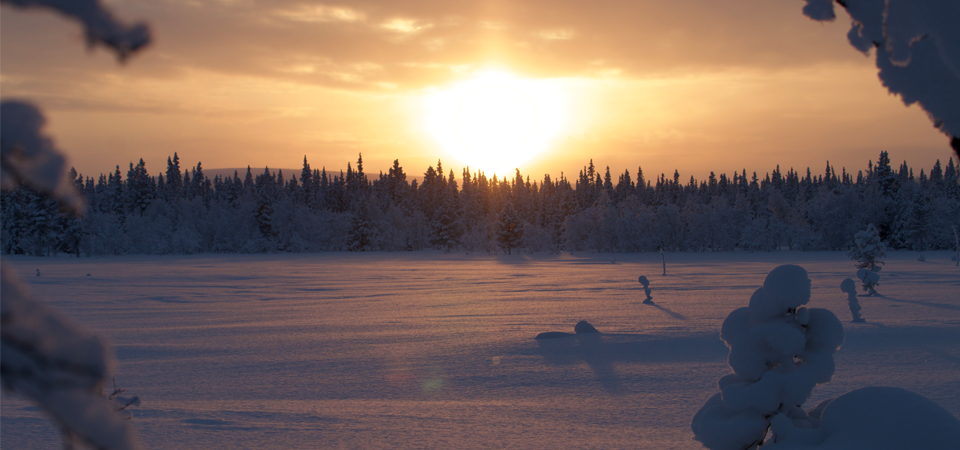
The heart of winter
When we came back to the hut, I almost stumbled through the door. The fire was hot and the food was warm. But no matter what I did, my feet felt like icicles. All my toes where white and the tips of one had started to go blue.
“You are not going out today my friend”, Tommy said in a serious voice. During the night, my toe had started to turn blue. There was no way getting around it. It had frostbite. “You will loose your toe, if you go out” he repeated. Dead-serious. When a man like Tommy tells you not to take risks, you don’t. It’s as simple as that. But as sad as I was to see Nikolai and Tommy leave for another day on the skies, I had a strange smile on my face.
I found something in the darkness the night before. Something that came to me, while I was in my hypothermia-induced trance. Something that was still with me, as I saw them grow ever smaller on their way over the ice. It was the impossible sensation of life, that insists on living, even under the harshest conditions. It was right there. In the mountains and the trees and the sky. What I had found in the frozen tundra of the north was the warmth of life, living in the stillness between a heartbeat, waiting patiently for the spring to thaw its vanes and let life flow back into its limbs. At that moment I felt humbled and blessed to be alive. And as I turned to walk back inside the warm cabin, I couldn’t wait to go back to Lapland again.
Equipment used
About Hounds Part 3: Puppy Love
David Carsten Pedersen about raising his hunting dog “Mille”
She treats every human being as a potential friend and petting machine.
David Carsten Pedersen
“Can we pet your…”. Yes of course you can. She likes it. And it makes her less afraid of the big city with all its noises. Actually I though she would be more stressed out about living in the concrete jungle. I know I am. I hunger for the forest and the open spaces. But Mille seems to be right at home in the big city. She’s not afraid of sirenes. She doesn’t stress about the cars. She treats every human being as a potential friend and petting machine. Because thats how she experiences life. And through her I get to experience people in the same way.
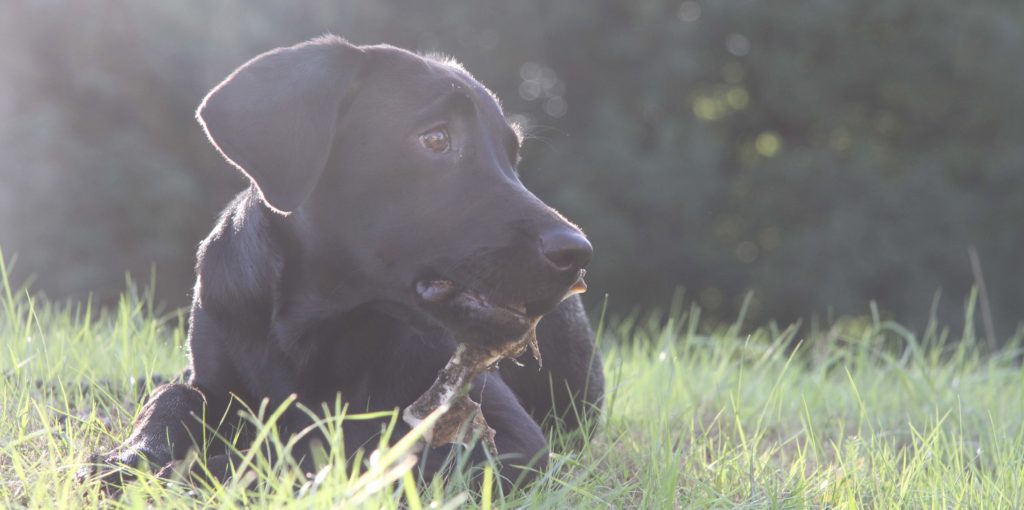
Instead I get to enjoy the conversations. When you own a dog in the city, you quickly find out, just how many people actually miss having a dog. They all tell you about a dog they once had, the dog they left at home, or just their dream of having a dog one day. People seems to need to talk, almost as much as they need to pet puppies. So you share small stories. You enjoy each others company for a while and then you move on. And after a short walk, you end up little bit happier that the human race isn’t so bad after all. If you look at them through the eyes of a dog.
I had decided that this buck would be the first buck that the dog would try its teeth on.
David Carsten Pedersen
“Come dog” the big machine was rumbling like a sleeping bear. The dog was 9 weeks old. And she would have none of it. “Come Mille. I’ll show you something great”, fighting her urge to be with me and her fear of the big four wheeled motorcycle, she looked at me with disbelief “I’m NOT going on the thing” she implied with all her being. But I would have none of that. It picked her up gently, and put her on my lap. With one hand on the dog and one hand on the throttle, I nudged the big machine into action and gently rolled of with the dog looking up at me as if I was crazy. But I knew she would change her mind. I had something to show her.
30 minutes earlier I was standing at a tree line, looking at a small pricket buck, eating away all the foliage, less than 30 meters away. “Should have brought the bow” was the first thought that went to my head, but I had only had little time before the sun was down. Picking up my rifle instead I had stalked through the low light of the forest, happy as a boy scout. I quickly spotted a large horny owl chick, sitting in a tree less than 10 meters from me. It had to be its first time out of the nest, and it looked perplexed at me while I stalked further on through the darkening forest. The buck had been waiting for me in a clearing less than 50 meters from there. It was a small animal. A yearling that wouldn’t amount to much, and the perfect animal to take out of the gene pool. I knew I had to many roes. And that taking out this so there would be less competition for food in that area of the forest. I knew it was the right decision to take him.
I dropped the animal with one clean shot, laying it to rest under the spruce that it had beed nibbling on. I had decided that this buck would be the first buck that the dog would try its teeth on. A small buck for a small dog. It seamed right. I dragged the animal a bit towards the road and then I stopped, going back to pick up my future track dog.
Driving the ATV down to the buck took no time at all. But the puppy didn’t like it. At all. The growling machine, the bumping of the track, the strangeness of it all. But she stayed in her spot on her lap the whole way, judging me with her big puppy eyes: “This better be good dude”. I stopped the ATV where I had dragged the deer across the road and liftet the dog of my lap. “Mille” I said while clapping my breast – a signal we had been rehearsing every time we had to train. “Mille – search!” She instantly started searching the area. Up until now we had only done the search command on dog snacks, but she clearly knew what the game was all about. Puffing like a tiny steam engine she picked up the track like a magnet on steel and followed it on a straight line, right up to the deer in the bush. And then she stopped. Sniffed at the buck. She waited for my command. “Take him” I said. And she went straight for the neck. I let her have a bit rough and tumble with the deer for a minute or so, just to give her a sense of achievement. And then I loaded the deer onto the ATV, my ecstatic puppy jumping around like a kid on Christmas day. It only took one word before she jumped onto my lap again, riding proud all the way back, with the air of a lioness on a fresh kill.
About Hounds Part 2: Owning a Retriever
About Hounds Part 2: Owning a Retriever
David Carsten Pedersen about raising his hunting dog “Mille”
I’ve seen labradors swim half a kilometer to fetch a goose out of the freezing November ocean. I’ve seen them drag deer out of the thick bush that weight twice as much as the dog. And for the last month I’ve seen my puppy retrieve anything that wasn’t nailed down. She looks so proud when she brings you a sock, a shoe or a toy. And then she sits down wagging her tail and smiles. Yes. She smiles.
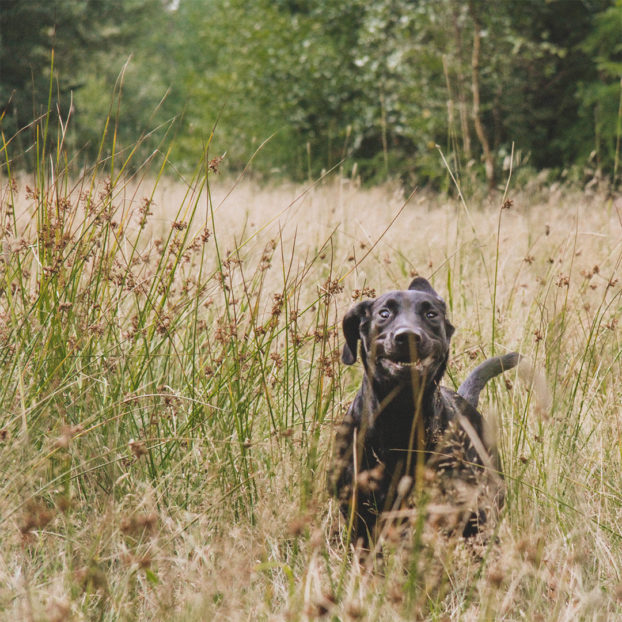
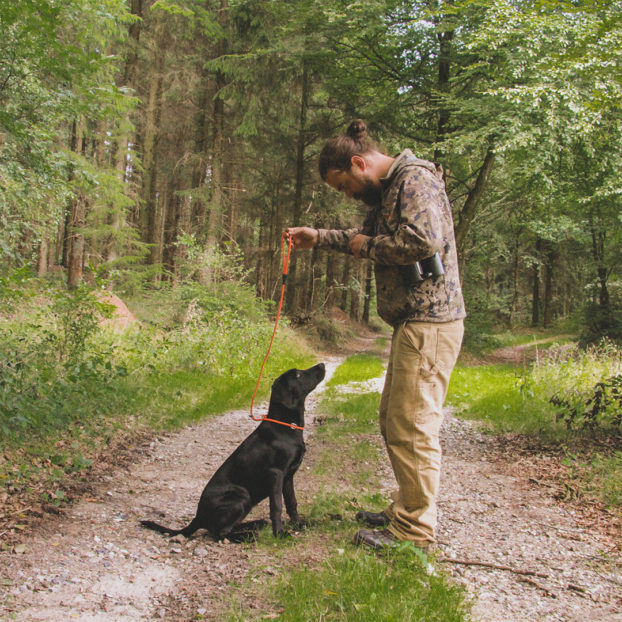
“I didn’t know, an animal could love you like that”, says my wife. She never had dogs, and grew up with two big black tomcats. They were very friendly and put up with a lot of stuff. But they were cats. A cat might like you. But a dog will love you more than it loves itself. And that’s why it keeps finding stuff that smells like you, parading around with it like a pheasant.
A cat might like you. But a dog will love you more than it loves itself.
David Carsten Pedersen
There is no such thing as a bad dog. But you get the dog you deserve. There are lots of people destroying a potentially great dog, by yelling at them because the dog didn’t do what they told them to do. But dogs don’t know what they are supposed to do. You have to teach them to do the right thing and praise them for their success.
It was Milles first day of “dog school”. We had been training for the last couple of weeks, but I always knew it would be a good idea to get some professional help. It turns out it was one of the best ideas I’ve had as a dog owner. When I was a child, no one went to a dog trainer. Hunters trained their own dogs and the results were varying. Some dogs were very good. A lot of dogs were not.
I think a lot of new dog owners think, that this is how it’s done. That training a dog on your own is the only way to do it, and that you don’t need help from a professional trainer. But think about it in the same way you think about shooting.
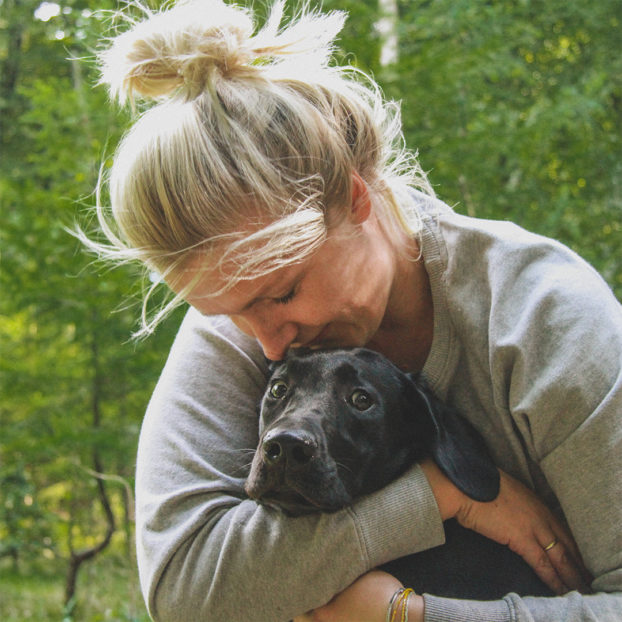
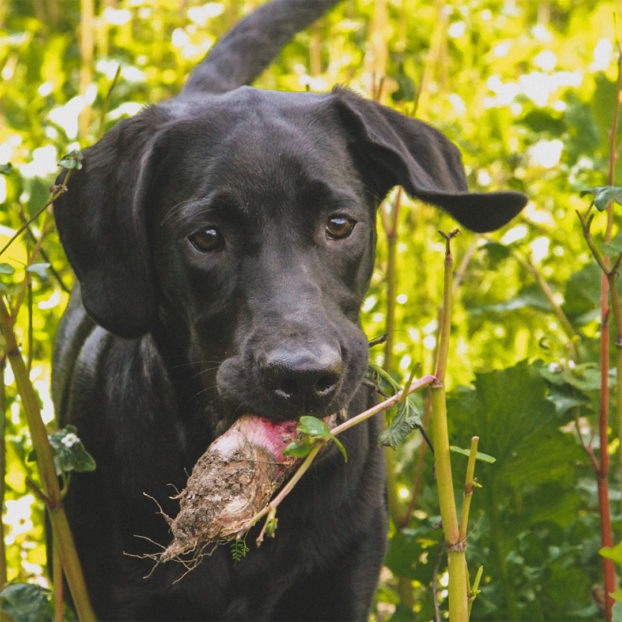
When I was a child, no one went to a dog trainer.
David Carsten Pedersen
Hunting with an experienced old timer will teach you a lot in a short time. Shooting long range is so much easier with a good spotter at your side. And busting clays is really not that hard… If you have a great coach. Teaching your dog is the same thing. It all starts with you.
“The dogs brain is basically a computer with everything installed. You just have to find the right button and start the right program. But it’s YOU that needs to learn how to do it. Starting everything at once will stress her out.
So start slow and have fun.” So we started slow, practicing the skill of sitting down and relaxing around other dogs. Then we started walking. And sitting down. Every time she does something, she gets a snack right way. “You need to look at your dog when you give her a command. It creates a bond and makes commands easier”. Looking at Mille is not a problem. She smiles with her eyes as if she tries to tell me: “don’t worry buddy – we’ll learn it in the end. I’ll help you”.
Year of the Dog – Part #1 “Difficult choices”
About Hounds Part 1: Difficult Choices
David Carsten Pedersen about raising his hunting dog “Mille”
But with the final breath of my parent’s last dog (a black lab named Fenja), the era of dogs had ended. And for more than 10 years we’ve had no dogs in my family. No pattering of paws on the floor. No wet noses to greet you good morning. No oily fur smell in the car after a long hard day in the field. Not having a dog wasn’t a conscious choice though. It just kind of happened. We kept telling ourselves that we lived lives where it wasn’t practical. Too much work. Too many travels. Not enough space. Not enough time. Most hunters, who live in the city, can probably relate. We live lives, that are not geared for dogs. Or so we tell ourselves. So we make up excuses. But none of them are good enough. Because we still need our dogs.
And this year, I finally decided to take the leap of faith and get the dog I always missed. This post is the first in a collection of short stories about me, my dog and all the things you learn when a puppy enters your life and you have to teach it to be the dog of your dreams. There will be moments of frustration. Of self doubt and struggle. There will be tales of beautiful women and the hardships of having a dog in a city, where everyone wants to pet your puppy. There will be adventures and action, and insights into having your dog on a radioshow. There might even be storys of puddles in the hallway. All in all – it will be a series of what it means to have a dog. And why your life will never be the same without it.
There is a saying in the danish hunting community: “No hunter is complete without a dog”.
David Carsten Pedersen
“This is her. This is Mille.”
My wife held the sleeping puppy in her lap like a mother cradling a baby. She was sitting in the hammock, hung between two large walnut trees, gently rocking the tiny dog, while she looked at it with all the warmth of a summers day.
We were visiting the breeder of our future dog, and we had to decide, which one of the 8 tiny Labrador puppies was going to be ours. We had visited many times before and had the pleasure of seeing the tiny fur balls grow up to be tumbling toddlers with over-sized ears, legs and paws.
Oh the paws. There is nothing as cute as the paws of a puppy. Ok maybe the eyes. Or the ears. Or… well everything is cute about a puppy. Thats their major survival mechanism. It just makes it extremely difficult for anyone to choose the RIGHT puppy.
Naturally I had studied all the books. I had asked all the experts for advice. I had even heard a few methods from the police on how to find the perfect search dog. “Don’t pick the runt or the bully”. “Roll a ball to see if they show interest”. “Don’t pick the one the breeder wants to sell _ pick the one he wants to keep”.
Well everything is cute about a puppy. That’s their major suvival mechanism.
The advice were many and varied. But they didn’t solve anything. First of all, we trusted the breeder completely. My father had known the man for more than 30 years, his family was amazing with the pups, and everything about the way his own working dogs behaved, showed that he knew exactly how to breed and train just the kind of dog we wanted. We even had first pick. He would choose his own after that. We also couldn’t tell which one was the “runt or the bully”. All the puppies were very keen, super-attentive and focussed. They all wanted to be petted and never shied away from human contact. All in all, there was no “bad puppy” that we had to avoid. Any one of the dogs would be a great dog. If we took good care of them. And that was the problem. Because we still had to make the choice. And I was at a loss.
How do you choose your future best friend? In the end, the dog chose us. After playing fetch, feeding and fighting her siblings, she just walked up to my wife, snuggled up next to her, and fell asleep. She trusted us. So we had to trust in the puppy as well.
About Hounds Part 2: Owning a Retriever
Up Close with Deer Stalker Jim Riley
Head of the ZEISS Centre of Excellence
Having started life as a Gamekeeper I have always loved the countryside, and hunting has always been in my blood. However, it wasn’t until I started deer stalking that I realised where my true passion lied.
Since the very first time I stalked a deer I was hooked. Not just the hunting side of things, but the deer themselves, their habits, the way they moved. It fascinated me how they could just disappear without a trace in front of my very eyes!
Hunting has always been in my blood.
Jim Riley
As a recreational Stalker, I was very lucky as I could hunt 3-4 times a week due to the fact most of my friends were Gamekeepers who had little time for deer stalking. I couldn’t think of anything else I’d rather be doing.
I then came to a crossroads in my life and had an unexpected opportunity to take on an estate that I knew well and I decided to have a change of life and pursue a different path. As a result, almost 10 years ago, DGVM (Deer, game and vermin management) was formed and the clients soon started to flow.
Then, after a chance call to ZEISS who were located near to me in Cambridge, I found myself as a ZEISS Pro Stalker – I had always loved their products anyway so it was hardly a difficult choice to make.
Once I started to stalk everything else took second place.
Jim Riley
Jim Riley: Behind The Rifle
Join ZEISS Pro Stalker Jim Riley for a wander around the ZEISS Centre of Excellence. Discover how Jim found his passion for hunting and why ZEISS optics are his first choice, every time!
Over time and through the many stalking clients I was taking out, along with the students who were attending training courses at my facilities, it became quite apparent that there were very little facilities that were similar where a potential client could go to actually try the products before they bought them. It was this eureka! moment where the idea of a Centre of Excellence was first born.
The concept was simple. Potential clients, regardless of whether they were my own or a referral from our extensive dealer network, would have the ability to actually come and shoot the scope they are interested in on an actual range (or out on a stalk) rather than simply reading about it online or seeing it in a glass cabinet. Furthermore, either they could purchase the scope at that time from myself on site, or purchase it from their dealer and head straight over to have the scope fitted to the rifle, zeroed on the range and ready to hunt that same evening!
As well as running the Centre of Excellence, I also travel around the UK accompanying ZEISS to various trade shows, including both the British and Northern Shooting Shows. I find this resonates well with the public as I have the advantage of first-hand hunting experience and knowledge on the subject, rather than just extensive product knowledge.
In addition to this, we have also hosted many of the product launch days, where both the Press and our Dealer network are able to put the new products through their paces on the range!
So, what’s my favorite product?
Jim Riley
For me I never stalk without my RF binoculars, I had the old model for many years, but have recently got had my hands on the new Victory Rangefinders that were launched earlier 2018. It has greatly improved, with noticeably better light transmission and less weight to carry. You can’t beat being able to accurately get the distance to the target, the client can’t argue with the facts and when I say it’s too far they have to agree as the ZEISS RF is never wrong!
Then for a scope, for me it boils down to two, either the V6 2.5-15×56 or the V8 4.5-35×60. I normally shoot with a Blaser, so the rail mount option of the Victory V8 is an absolute dream to mount and dismount, reducing the time and hassle of having to re-zero the rifle every time. The optical quality, light transmission and build quality put this scope at the top of my list.
